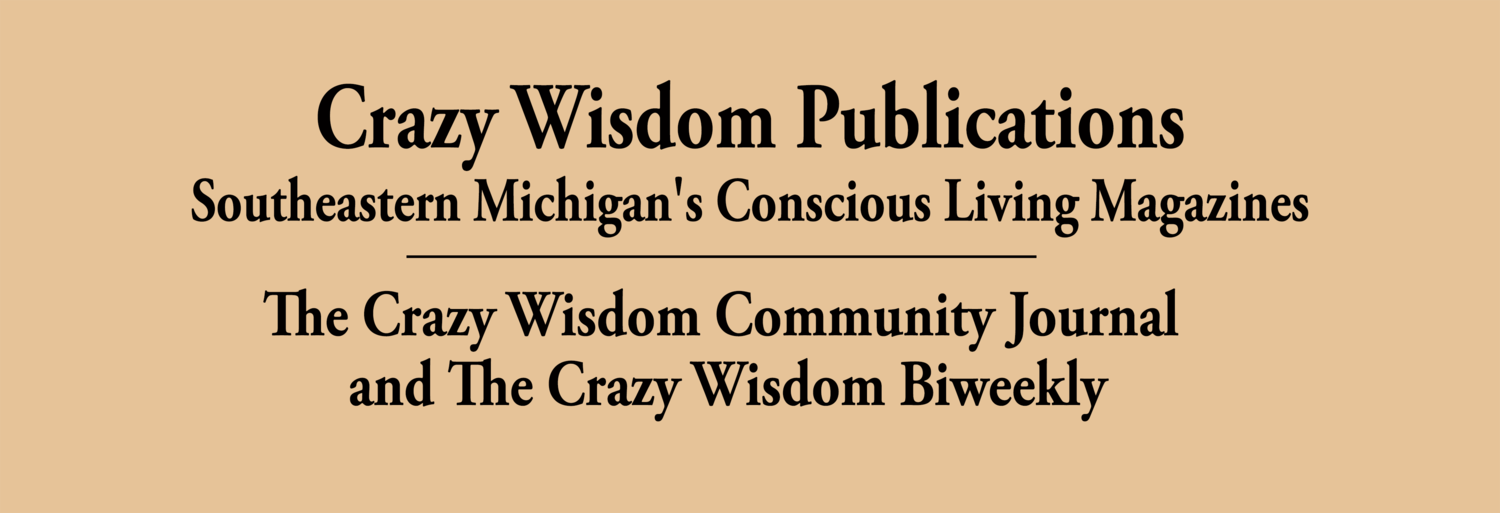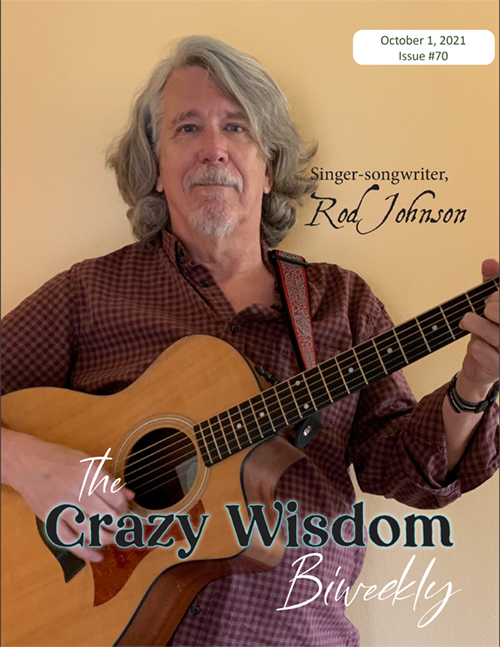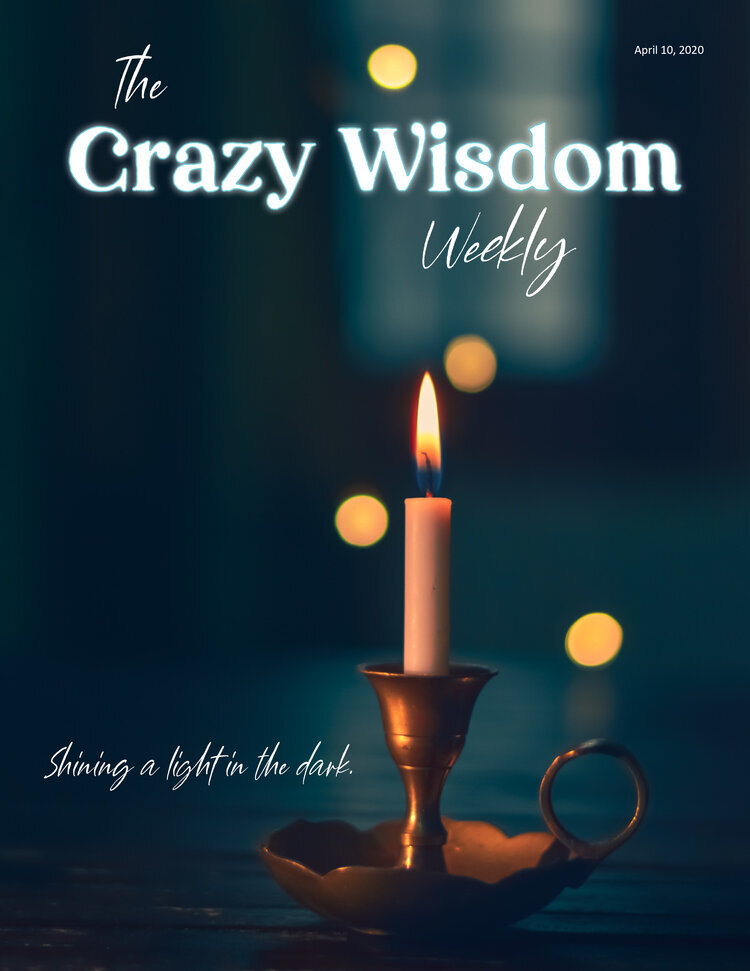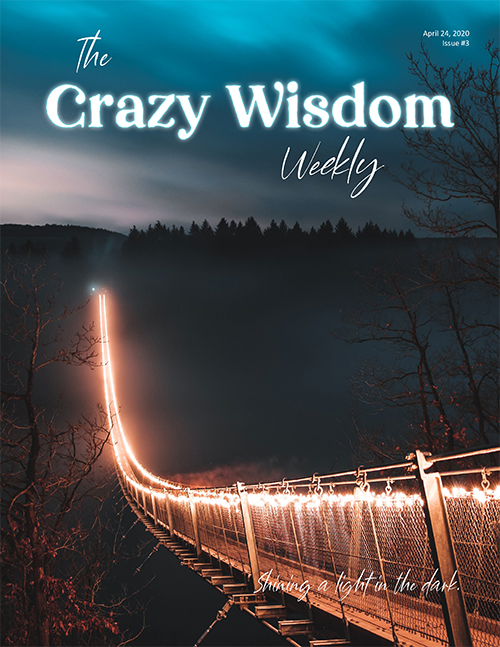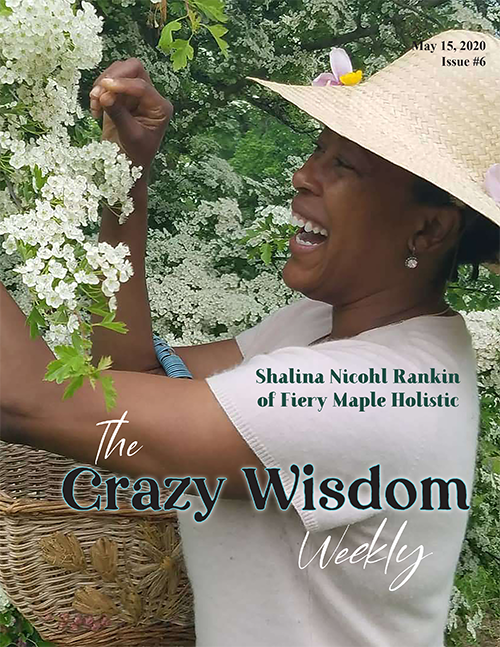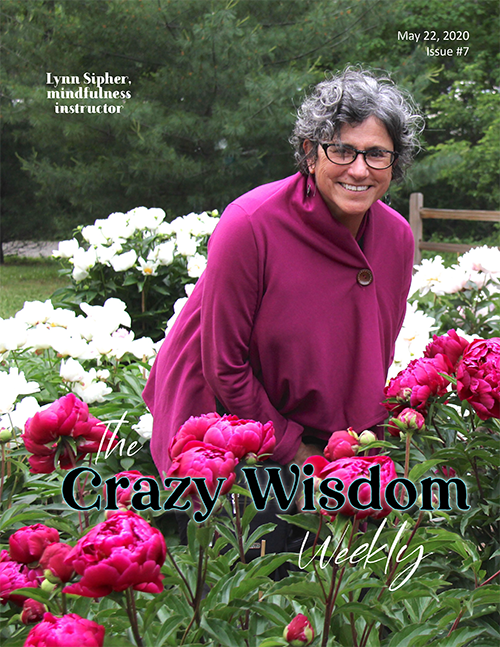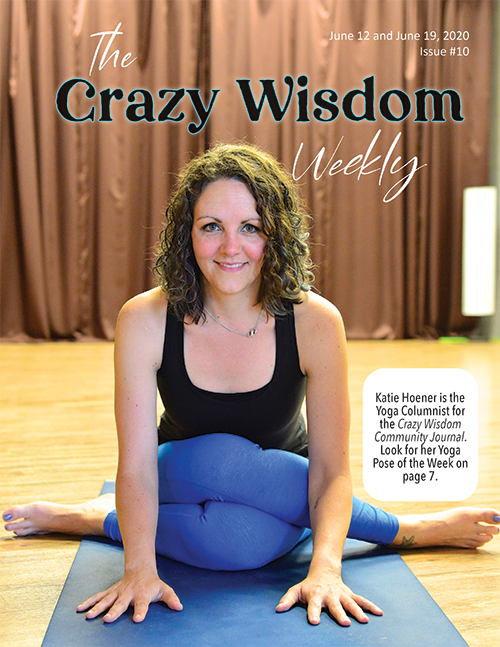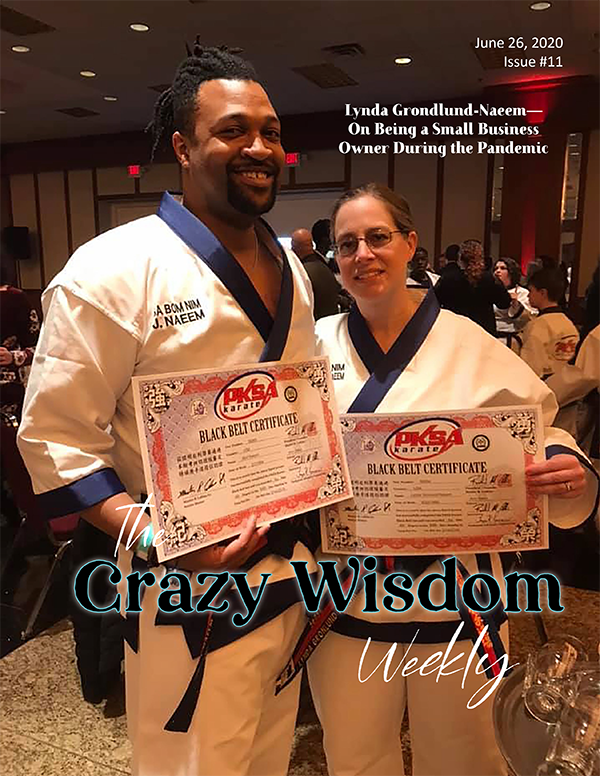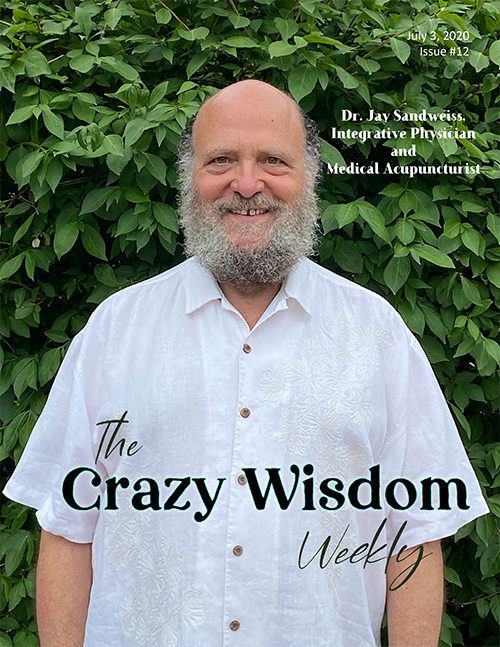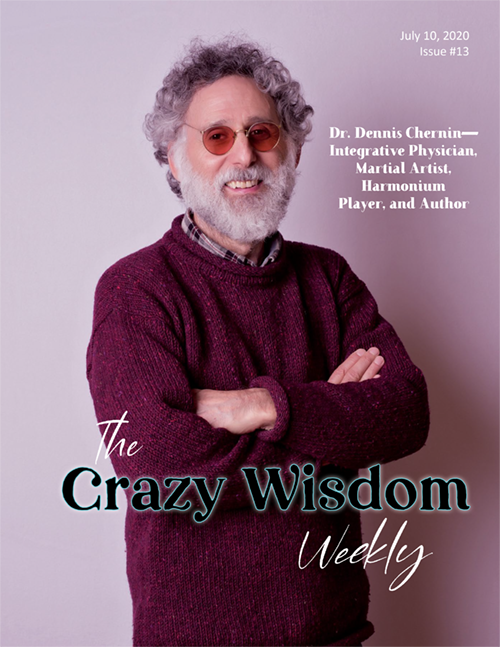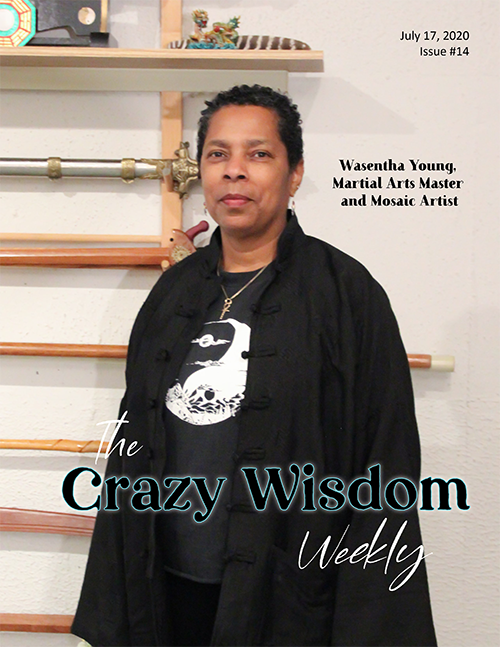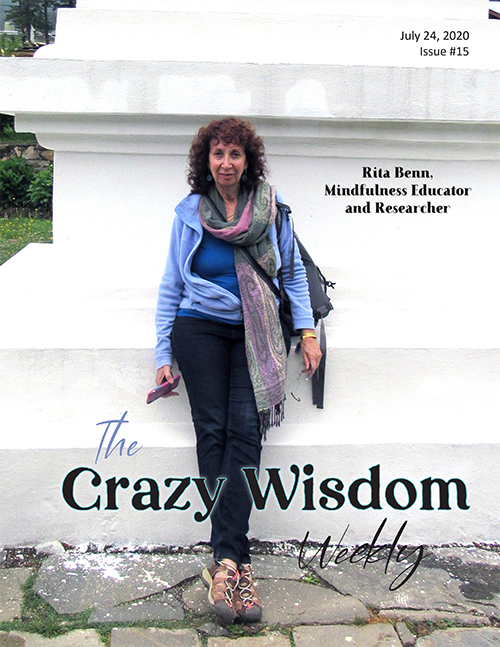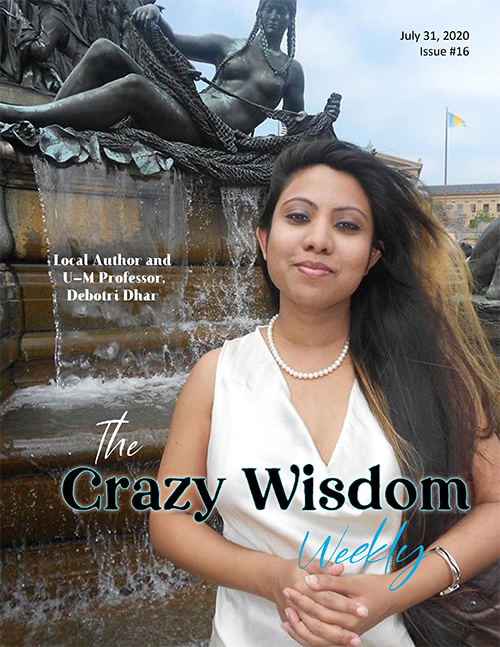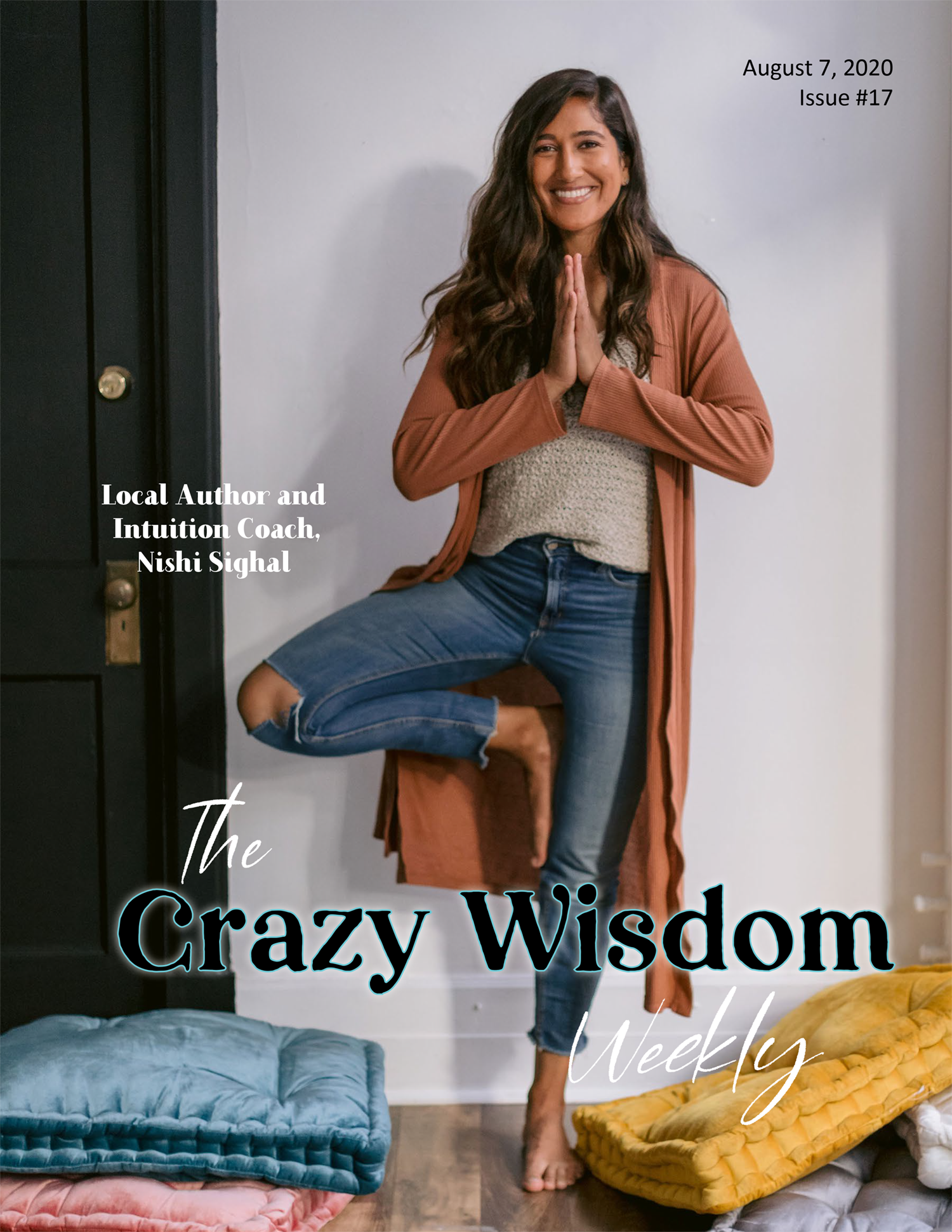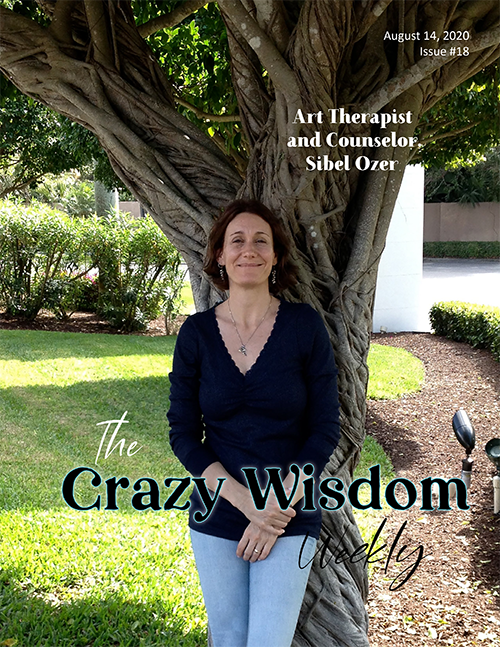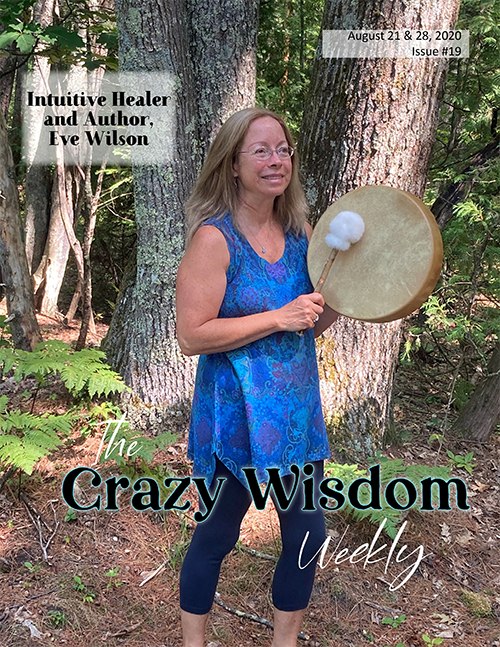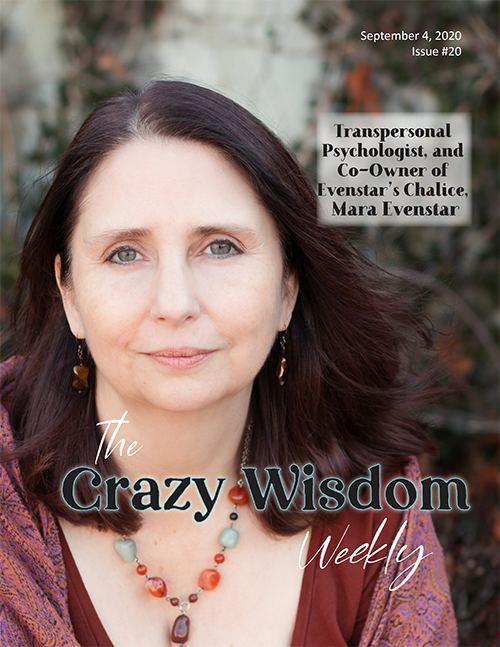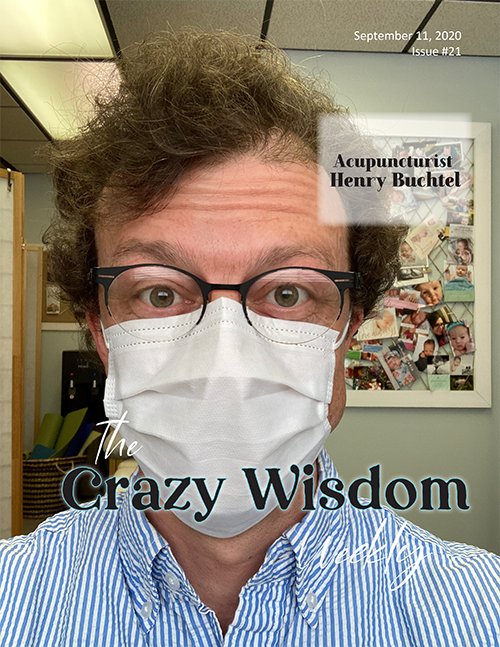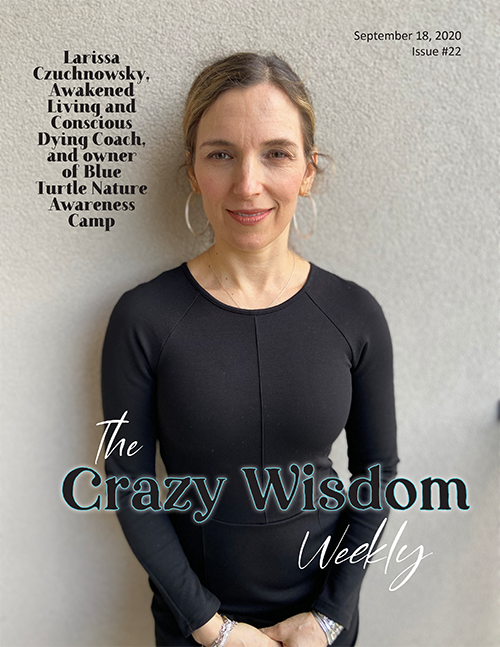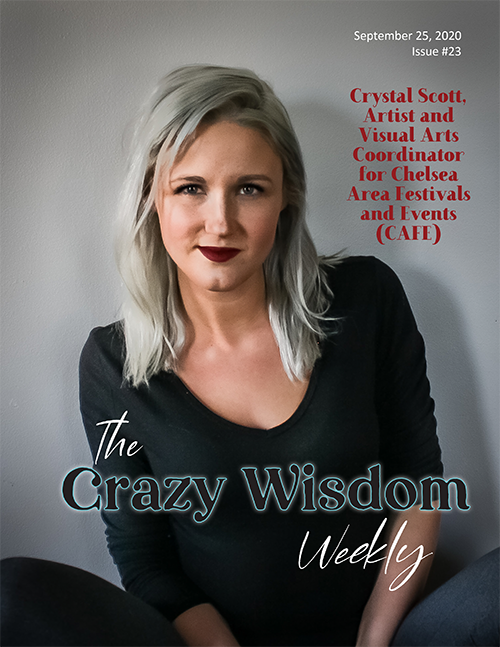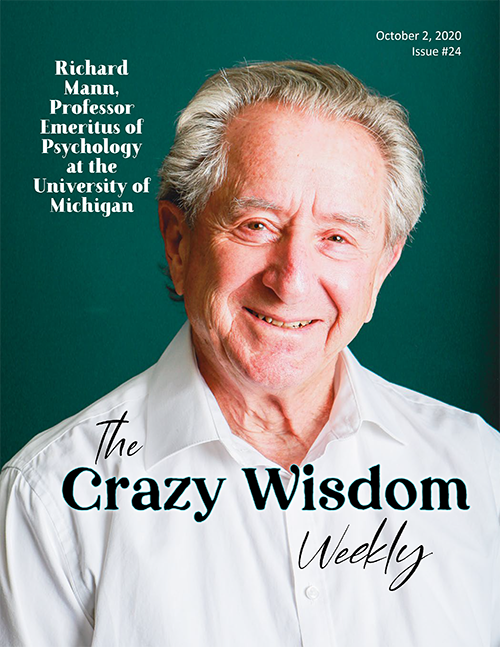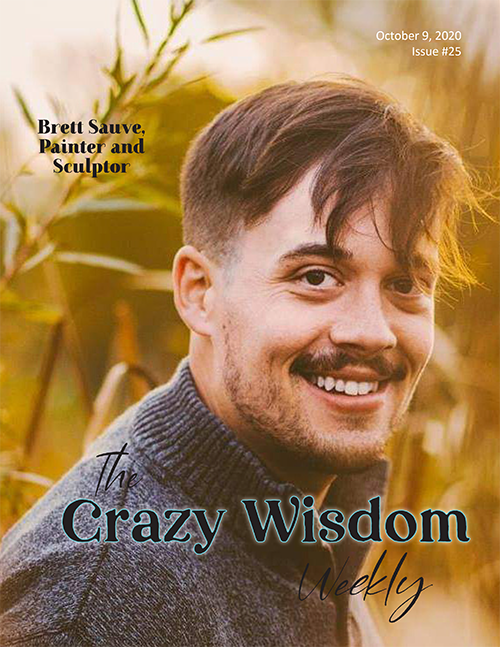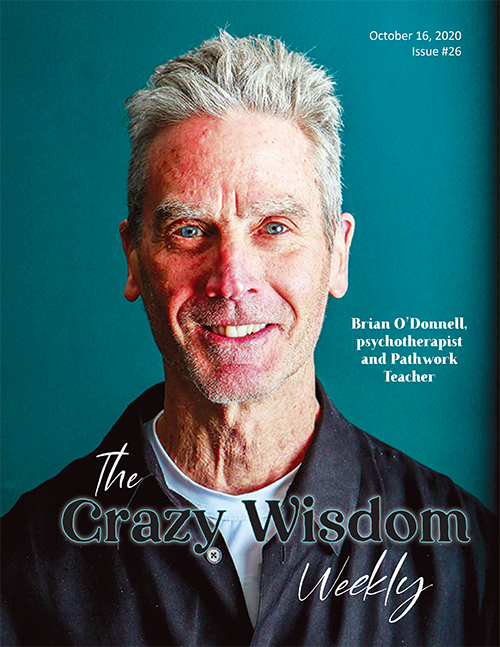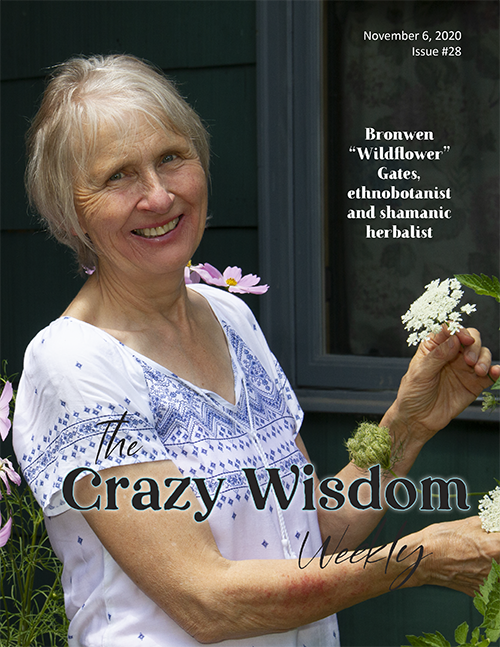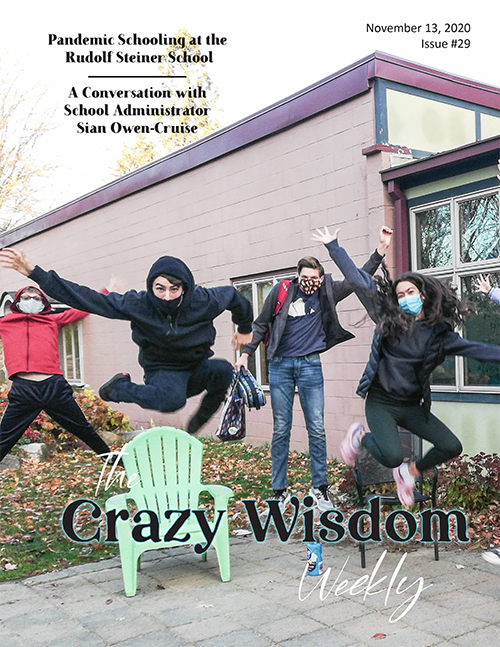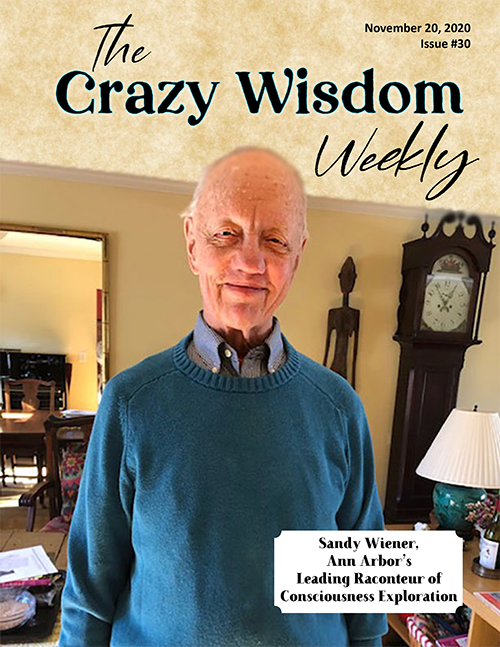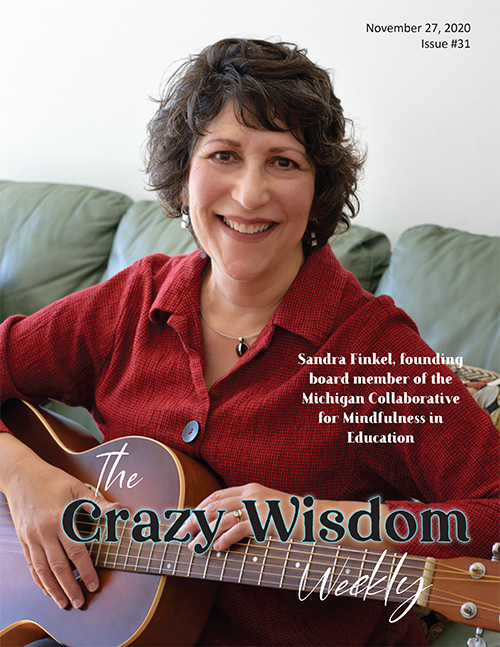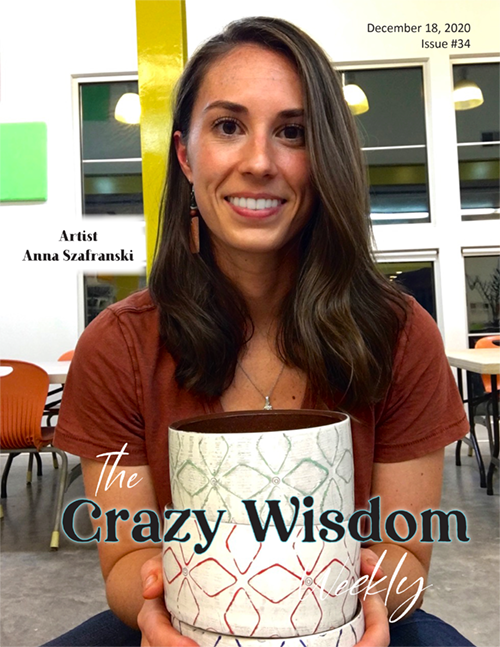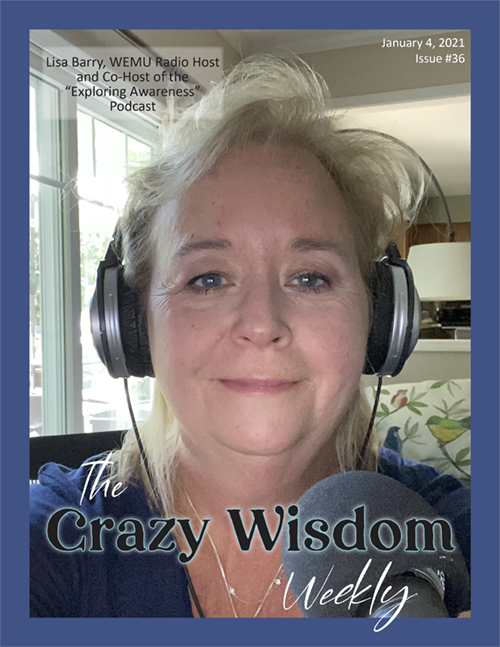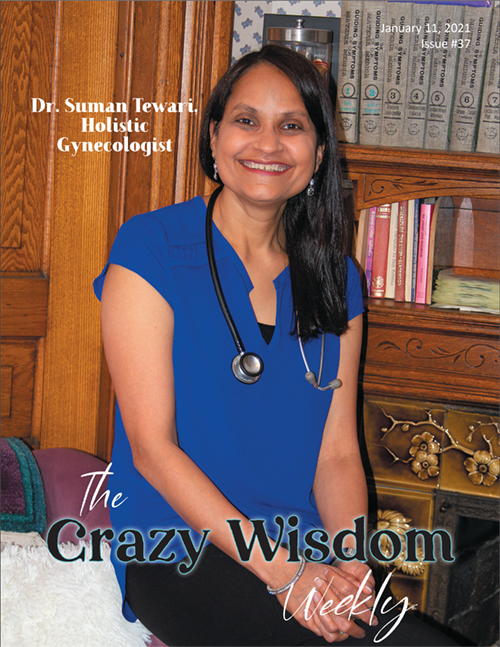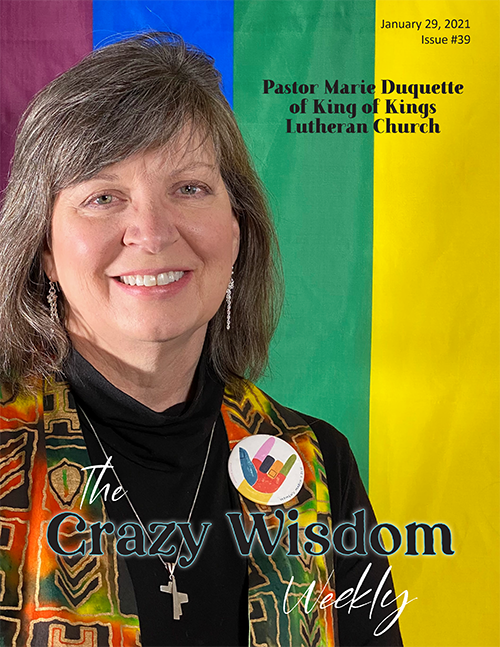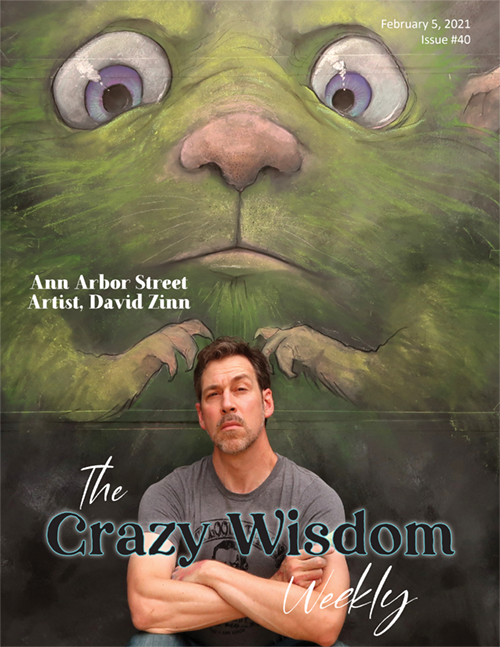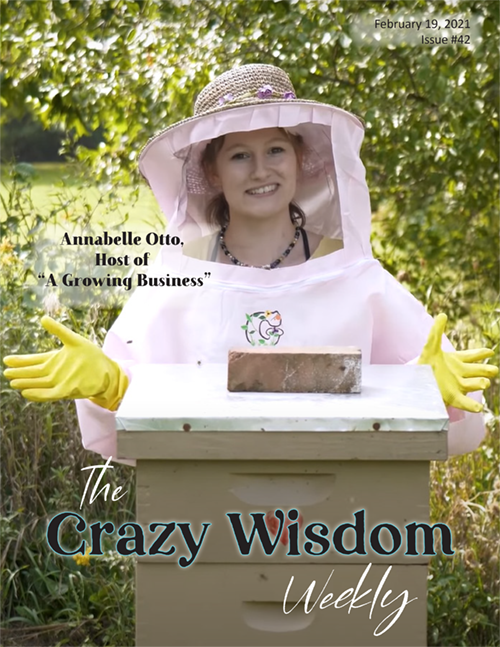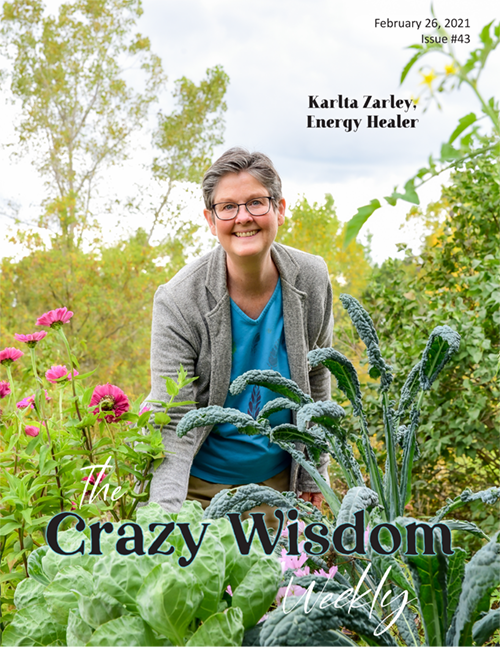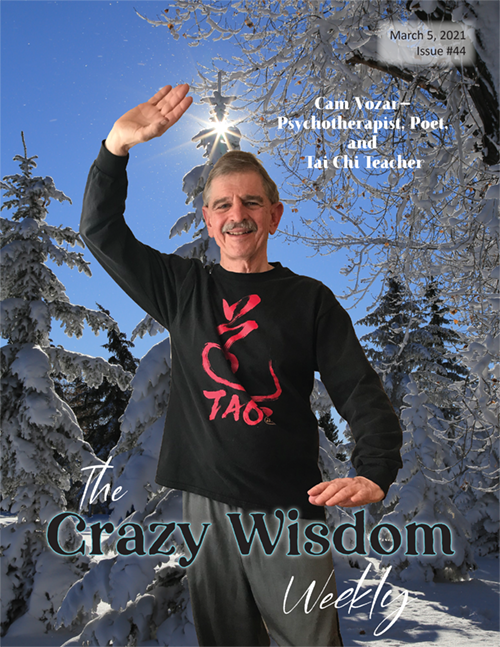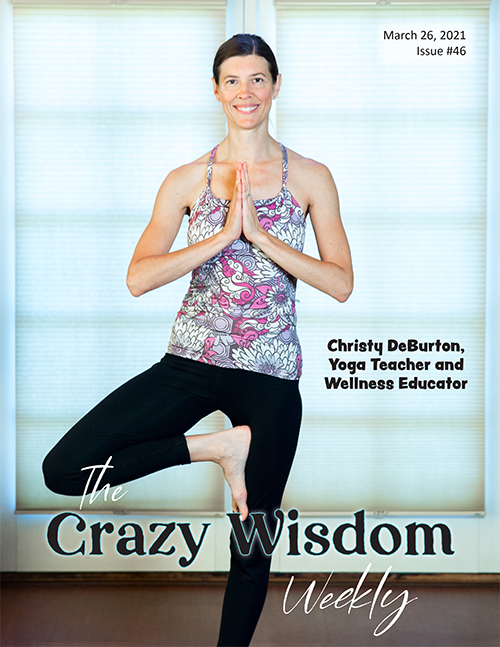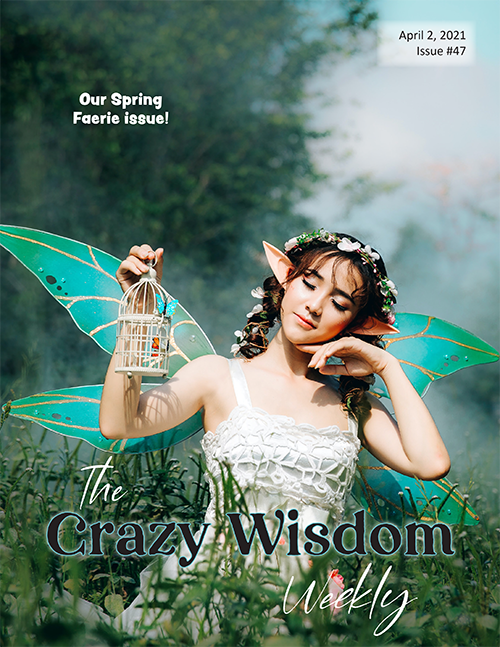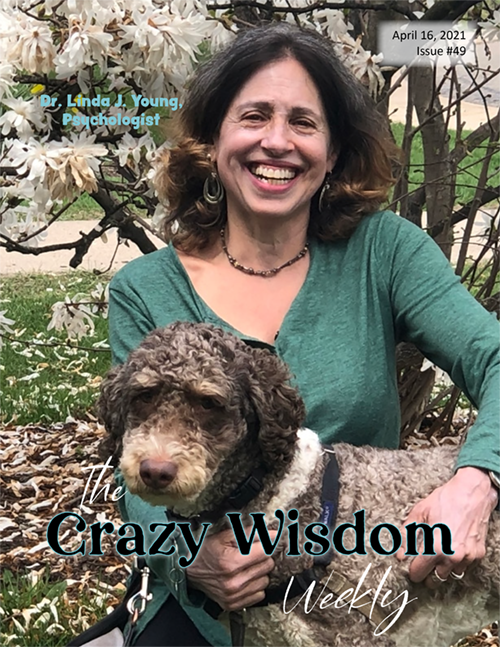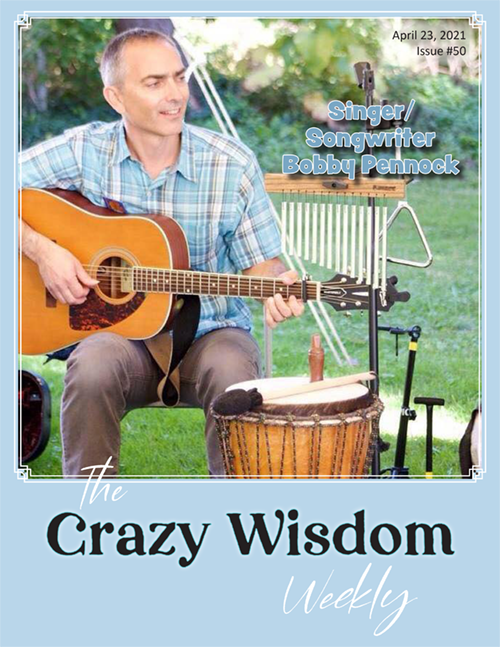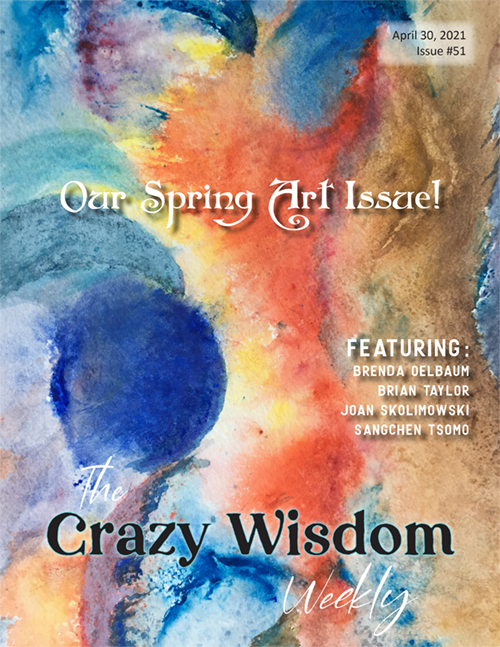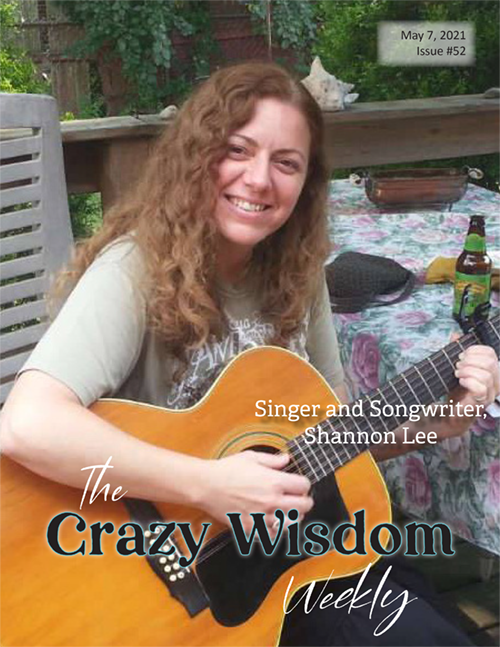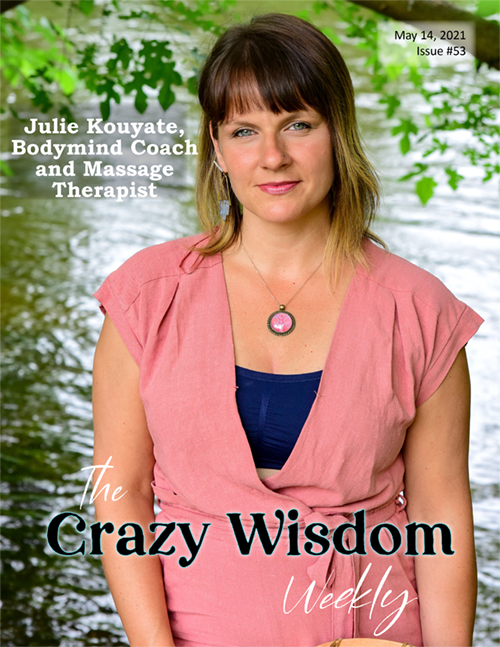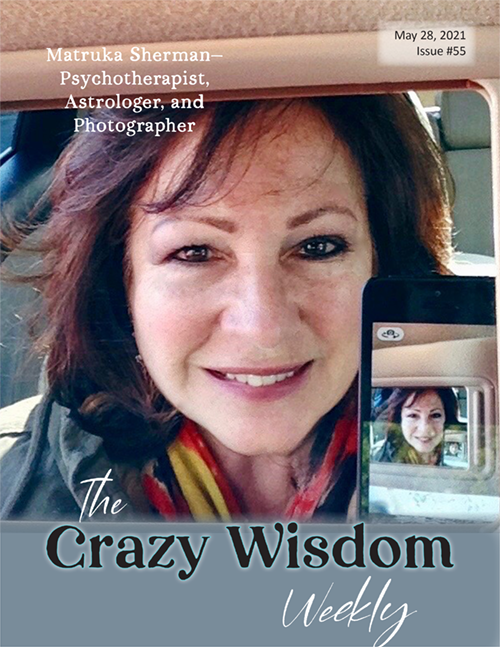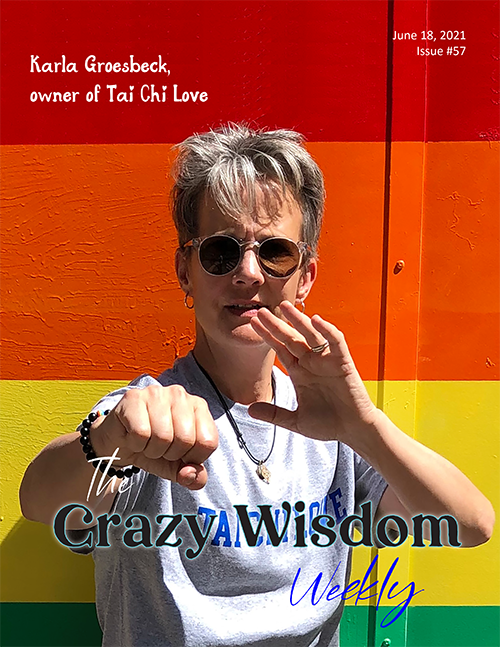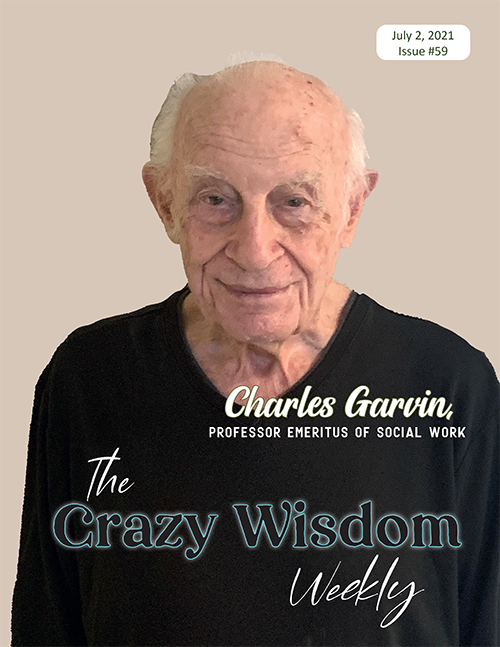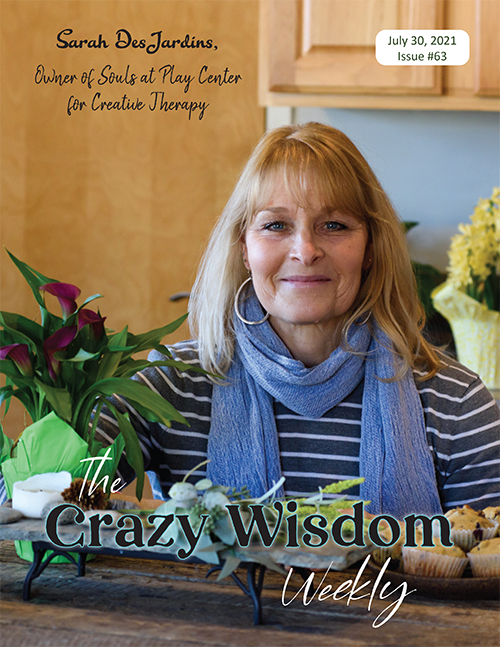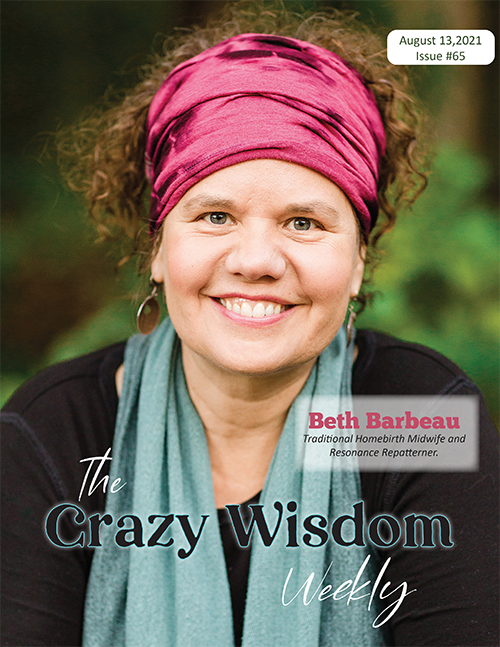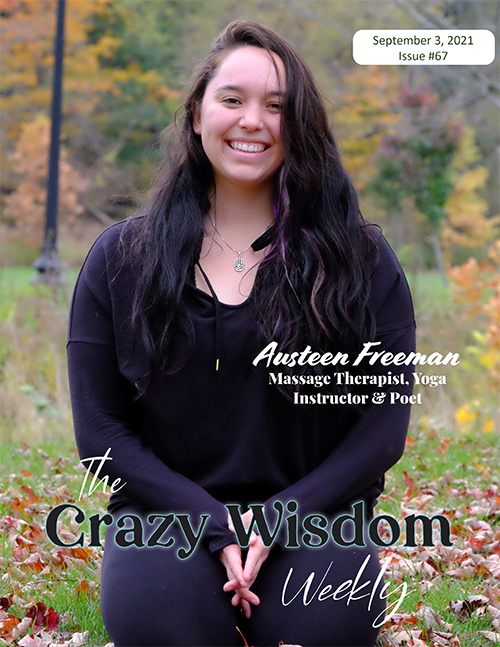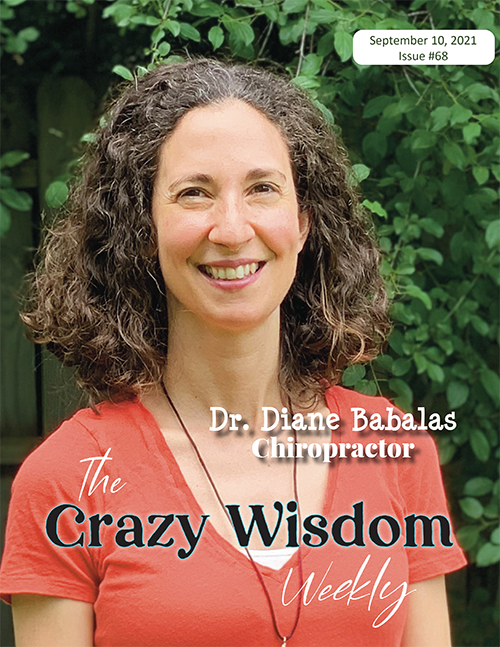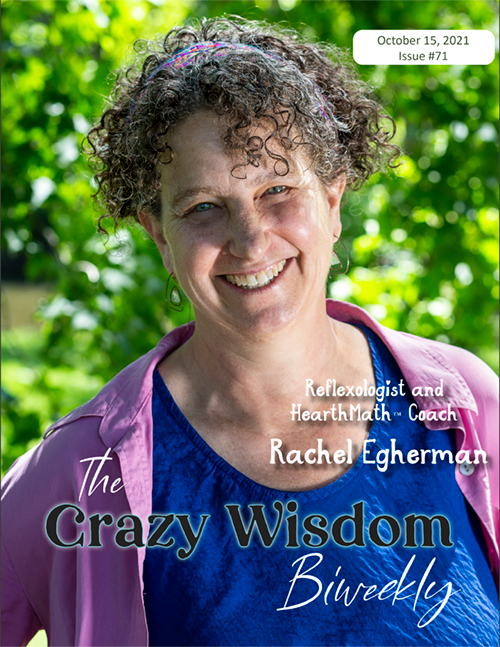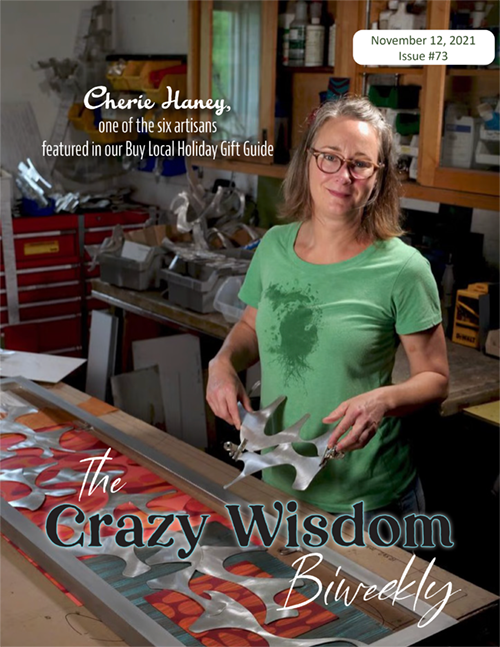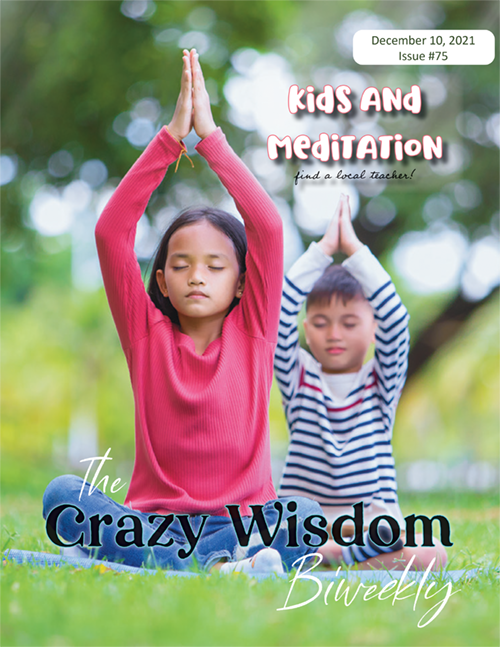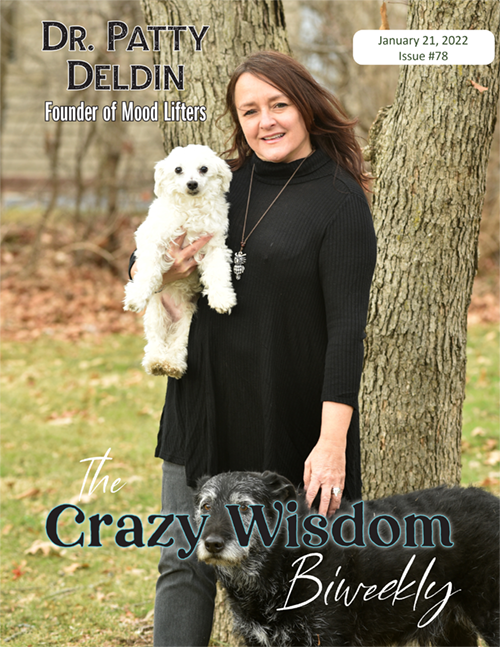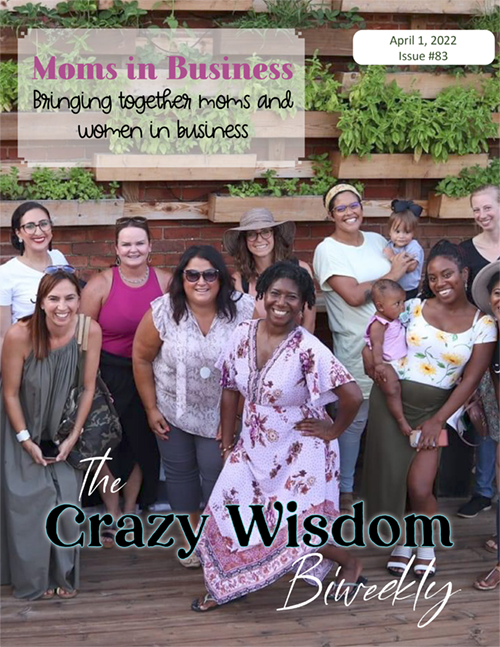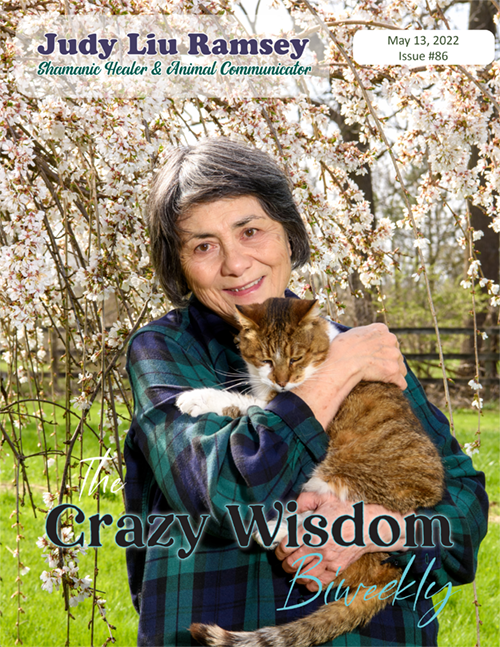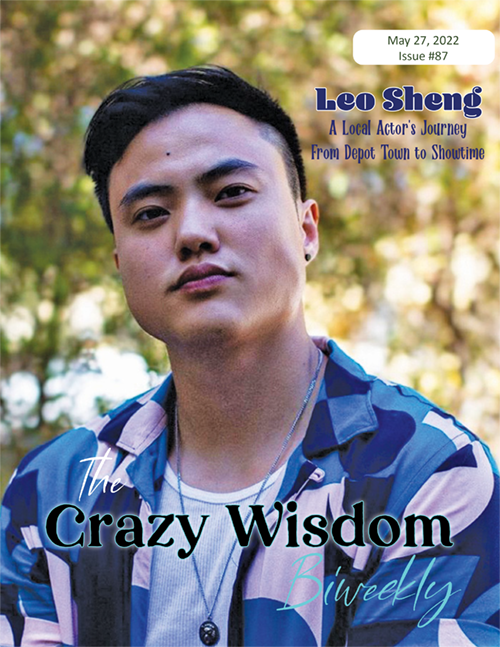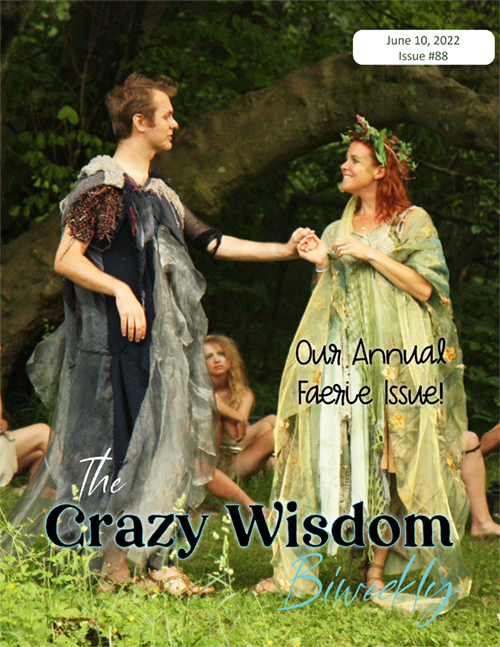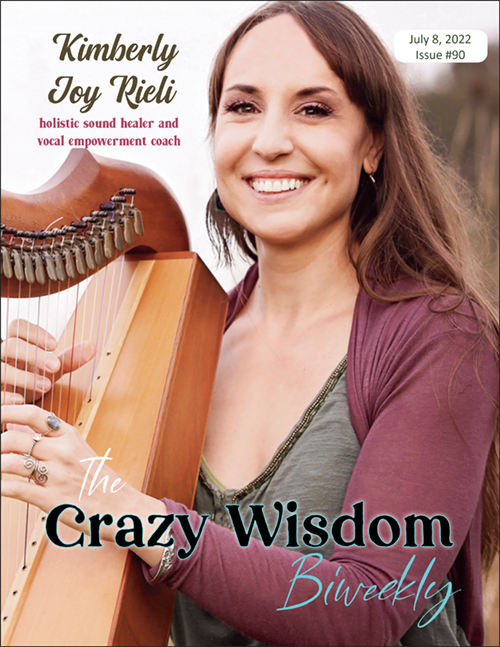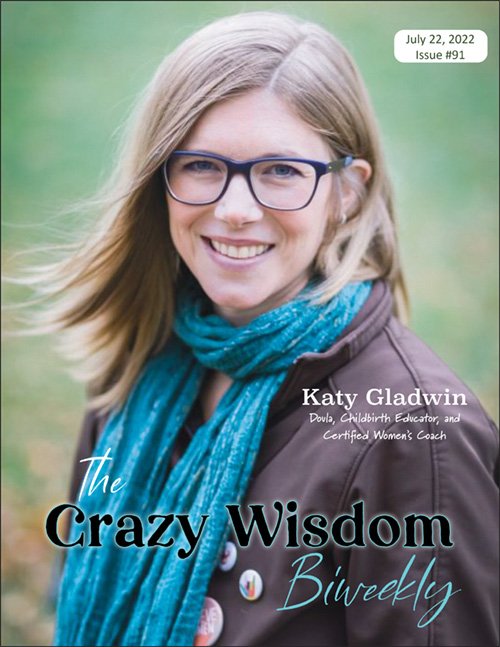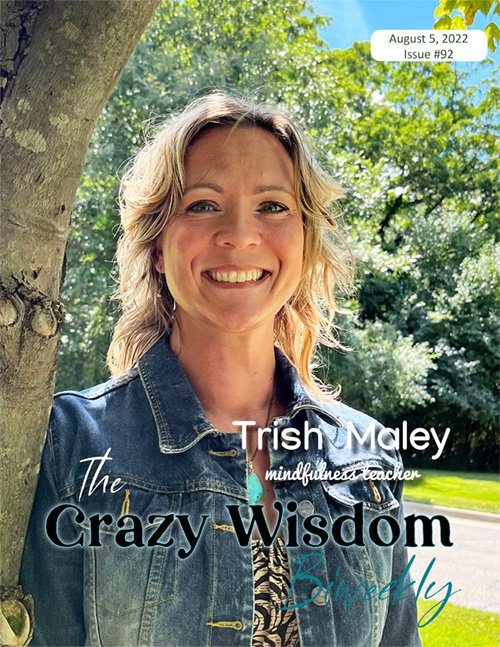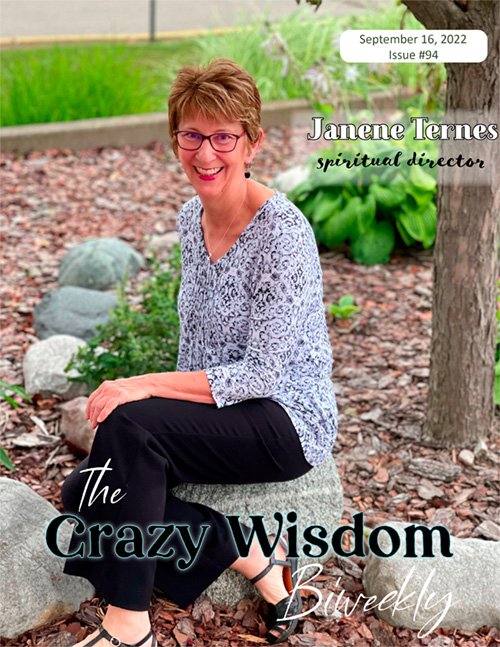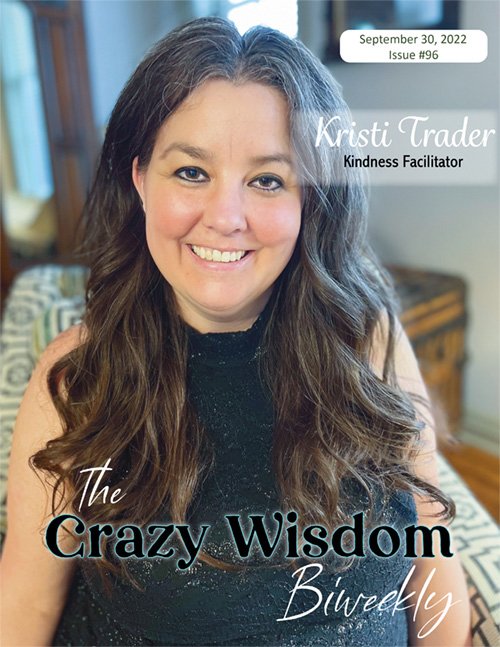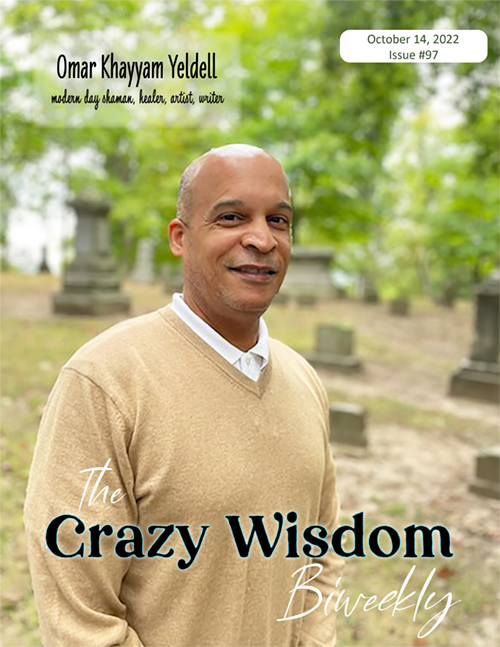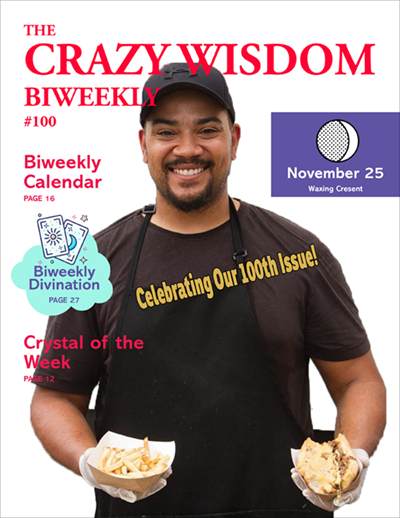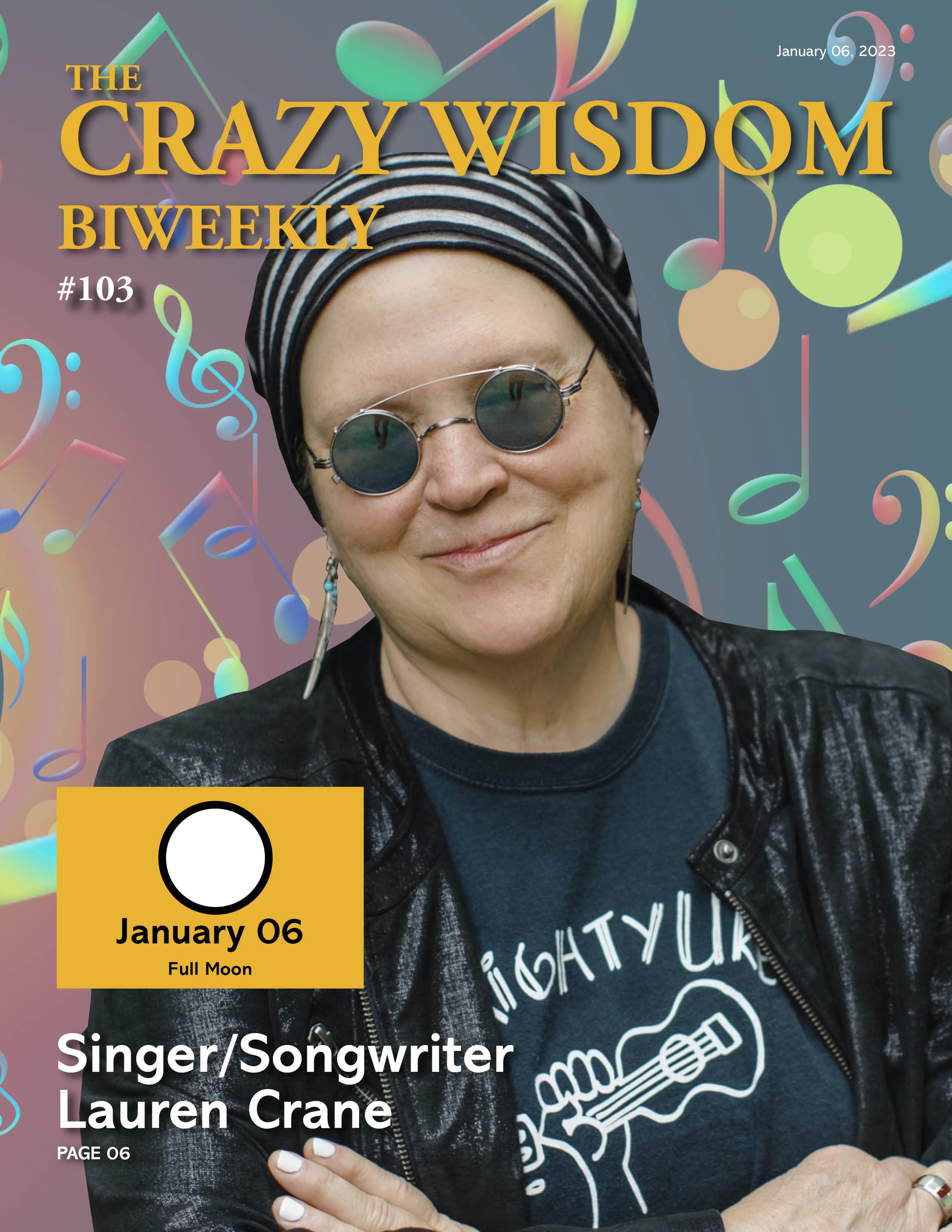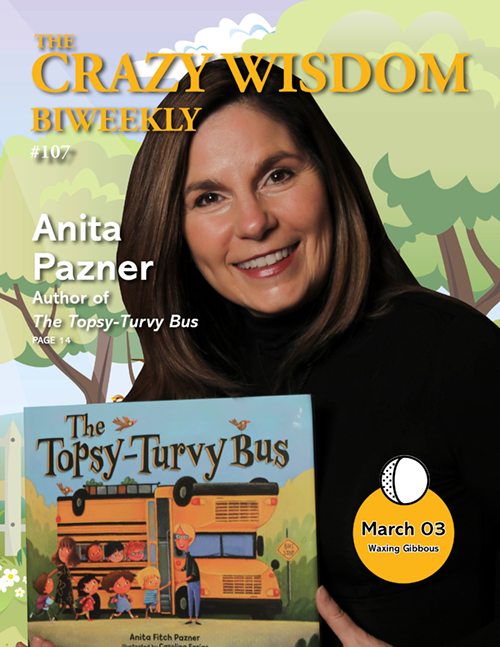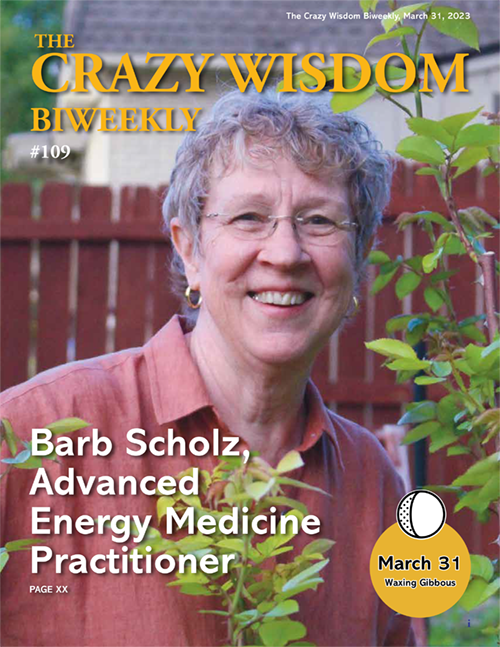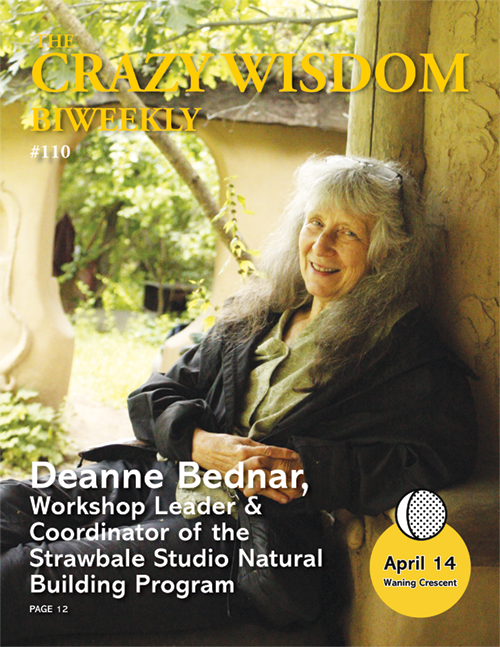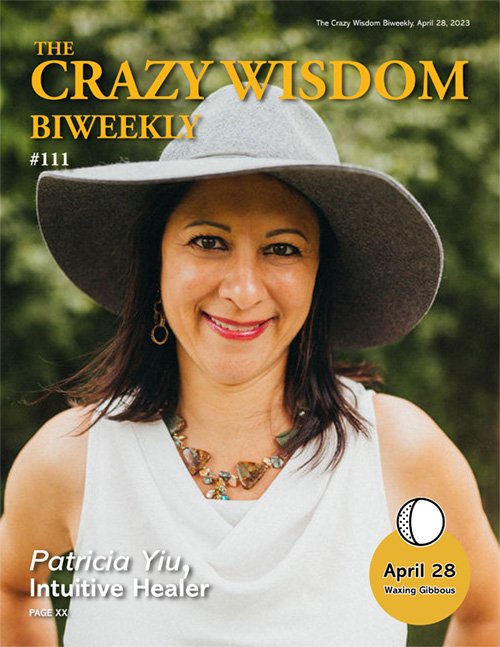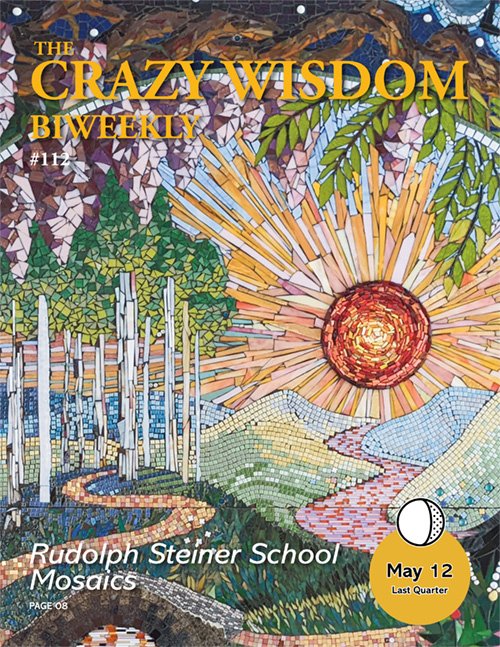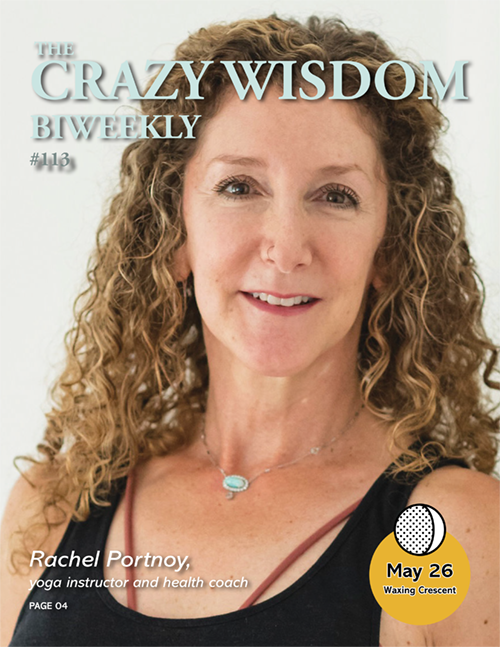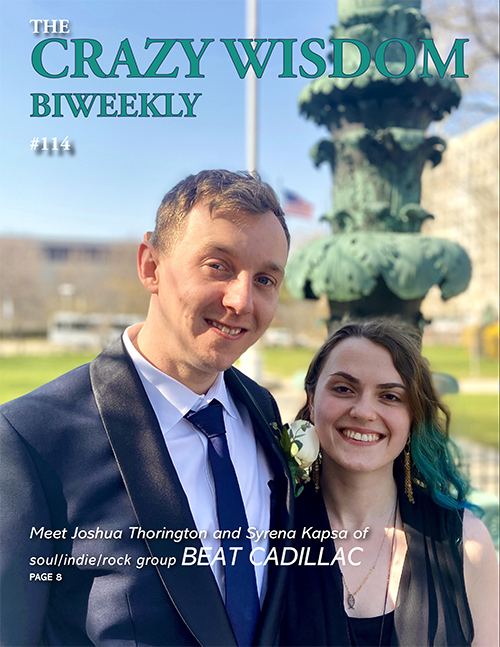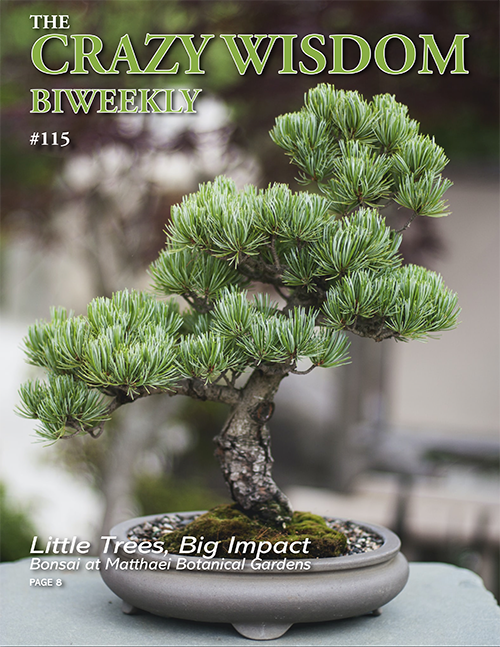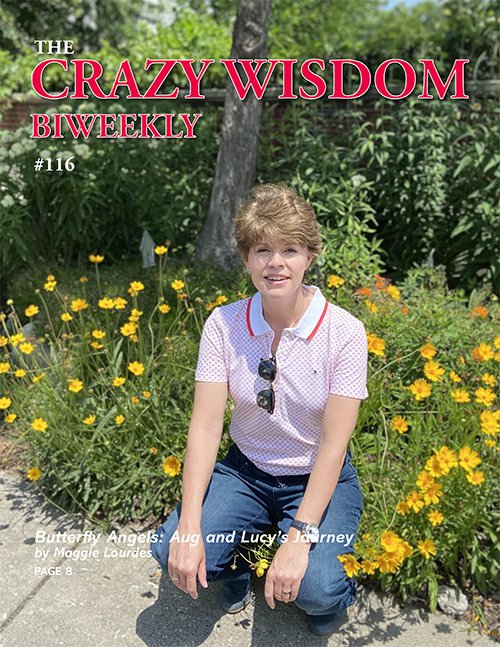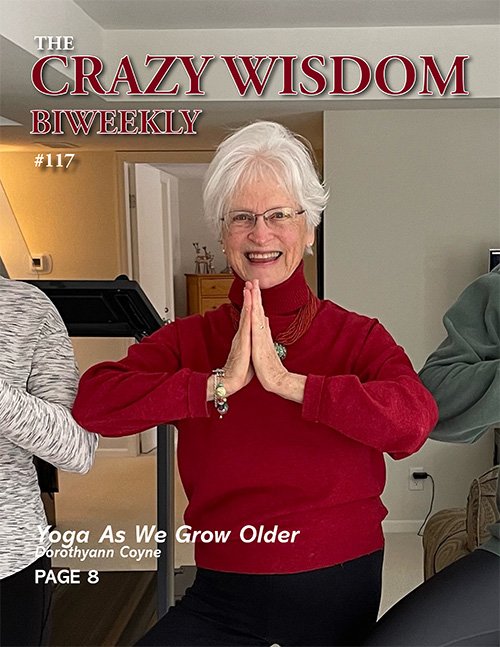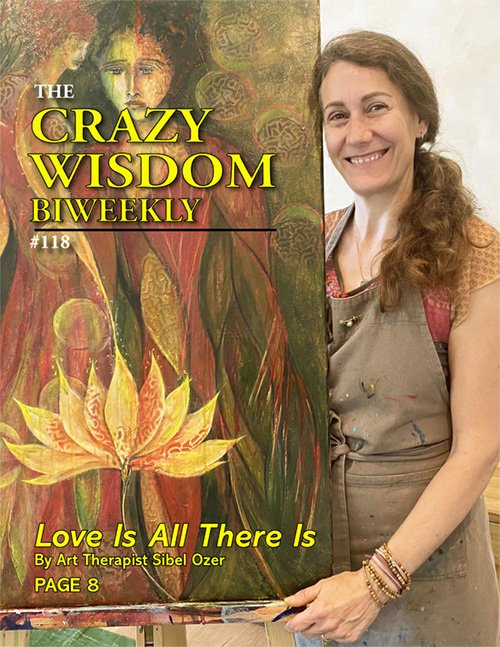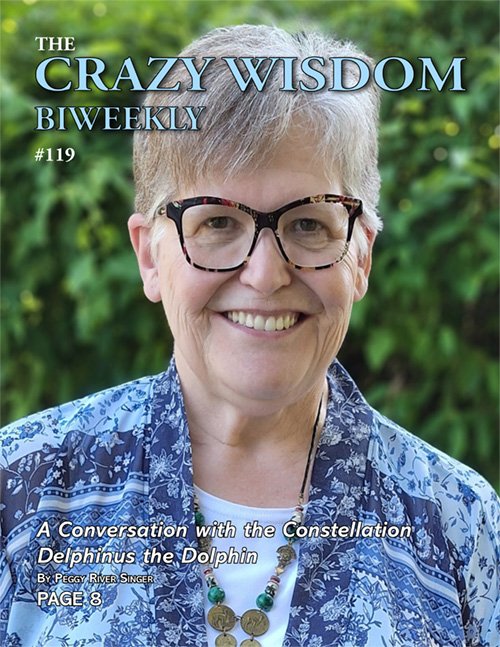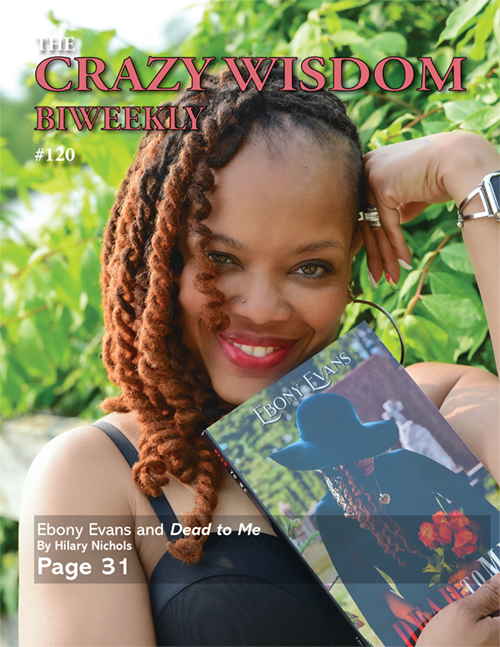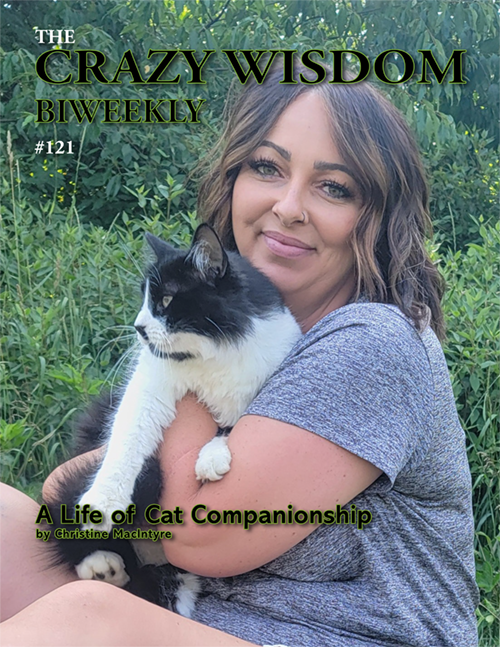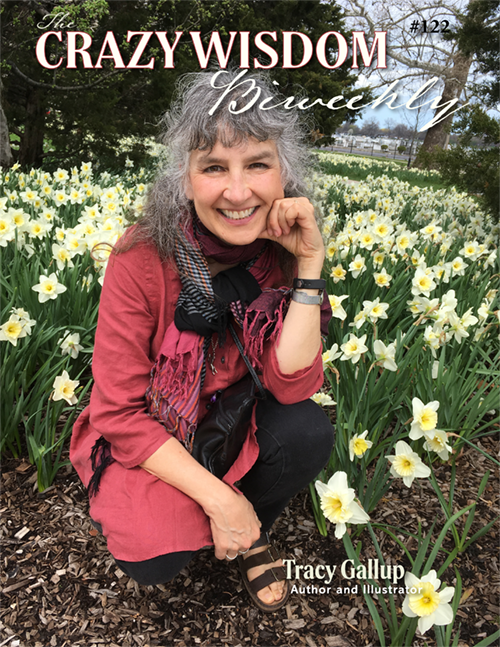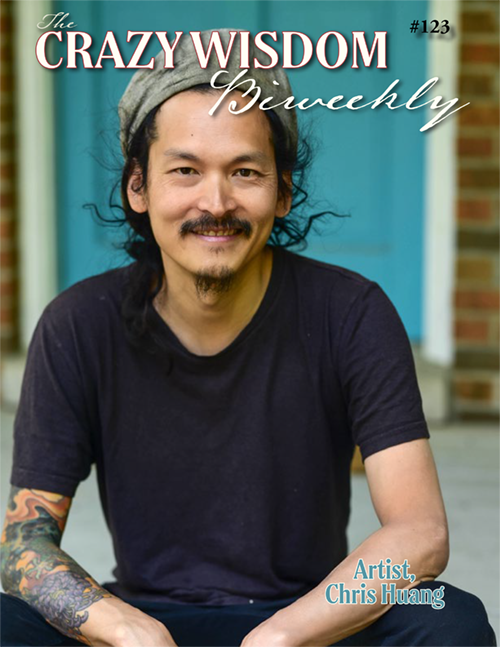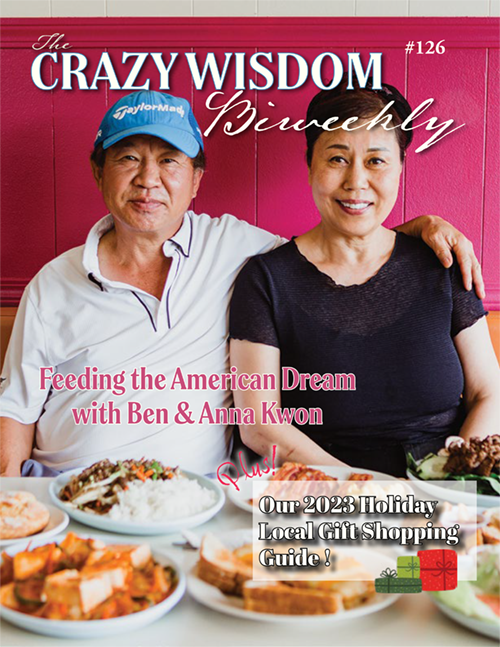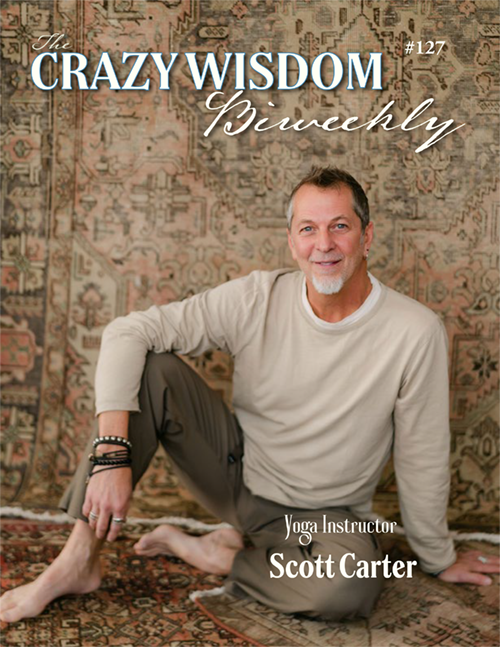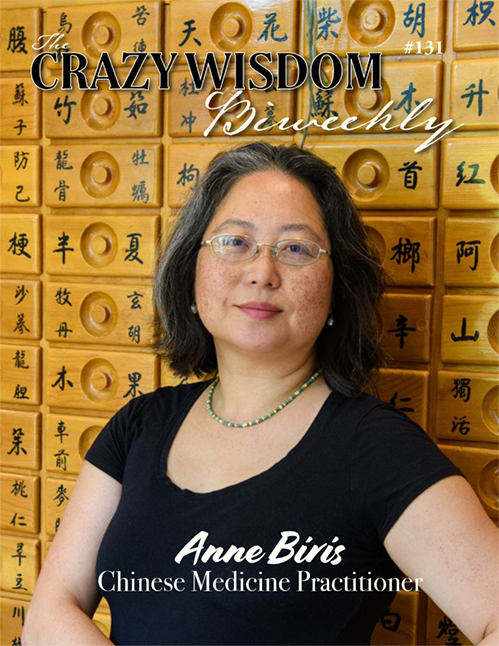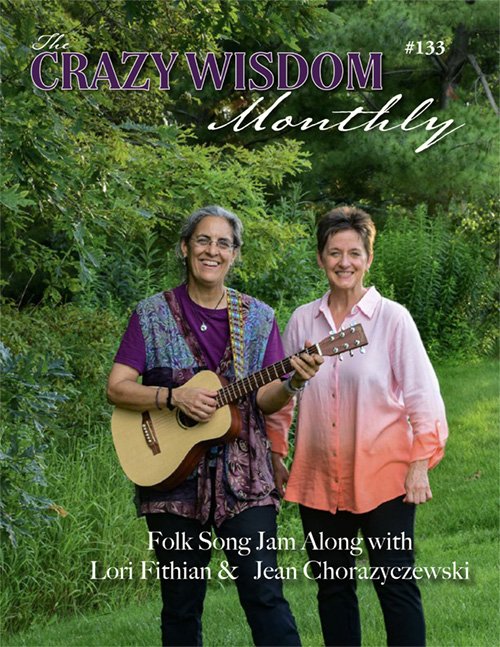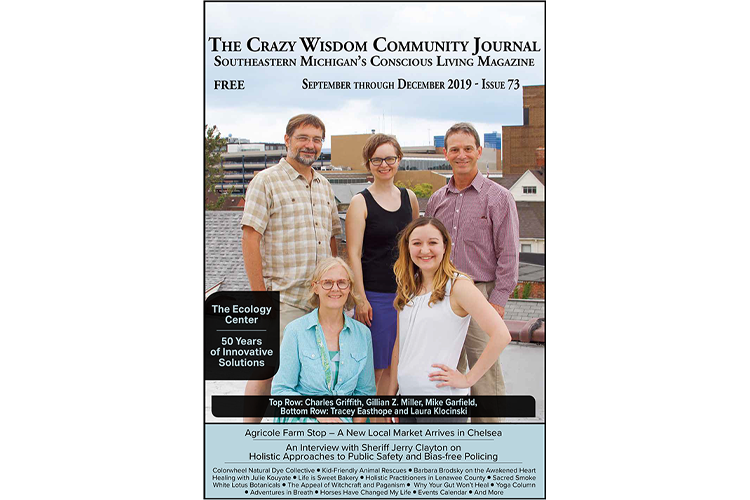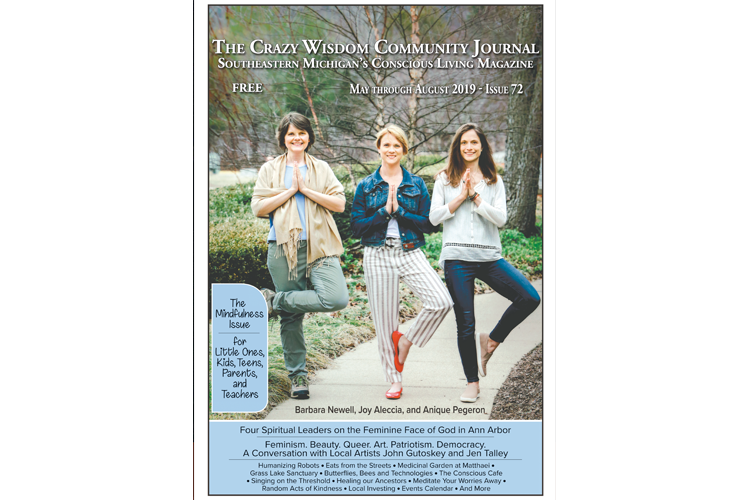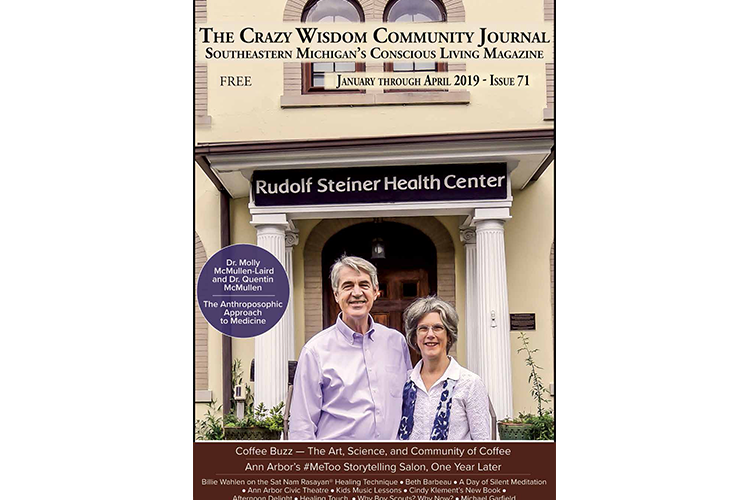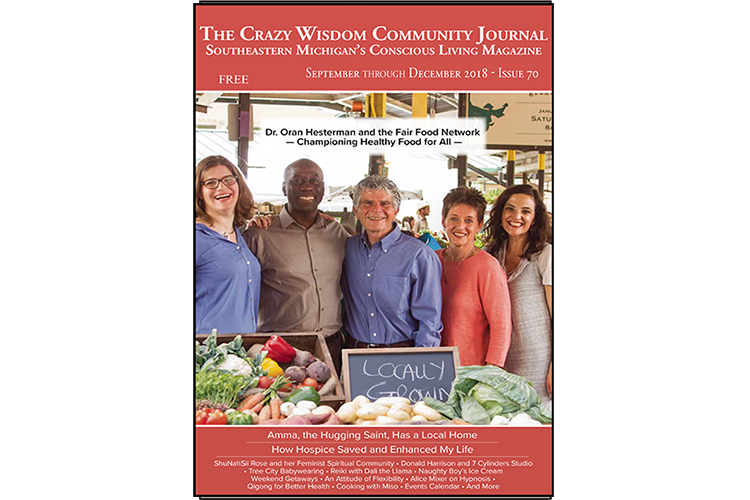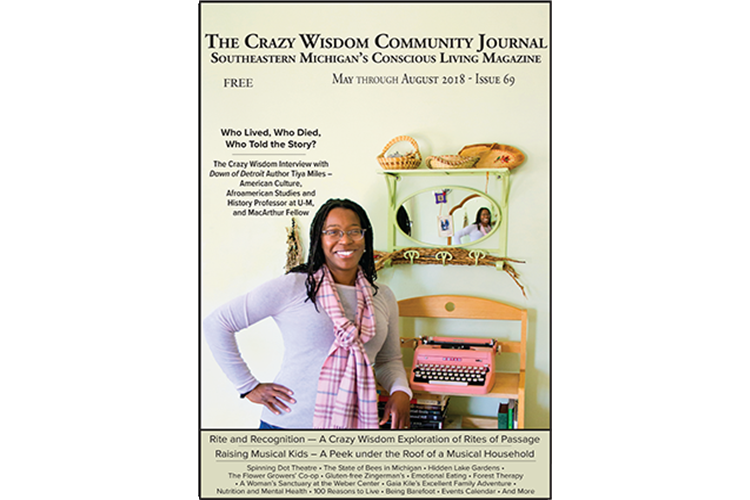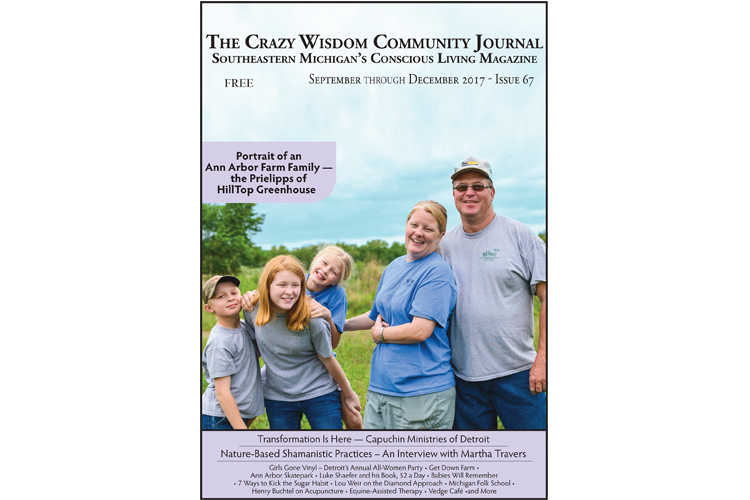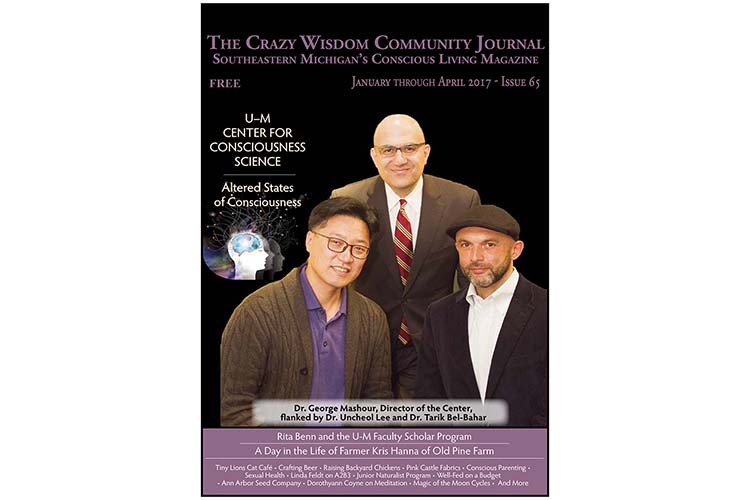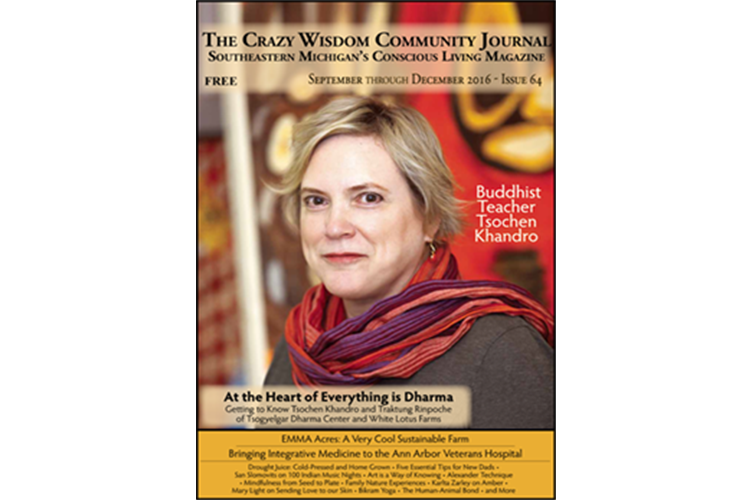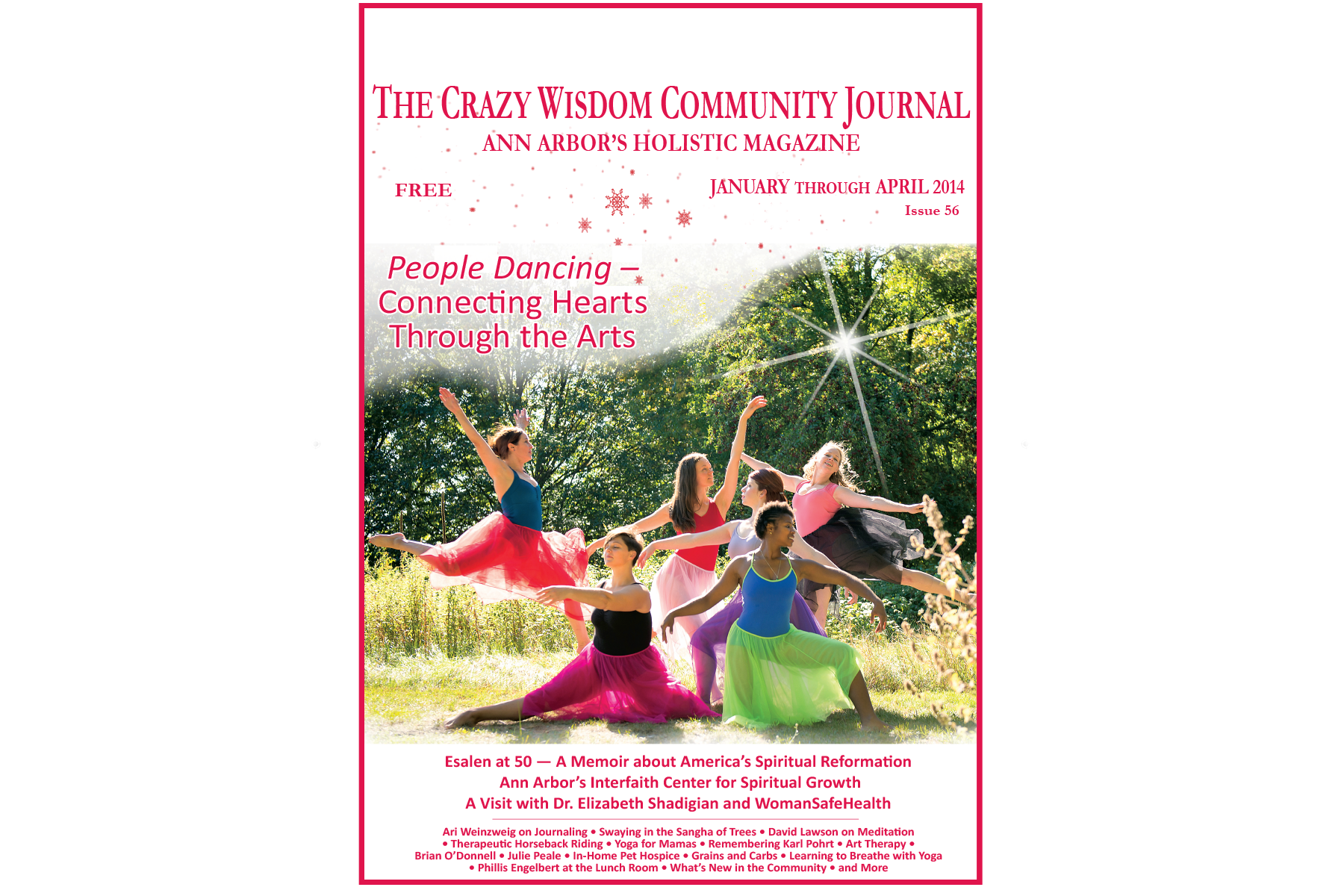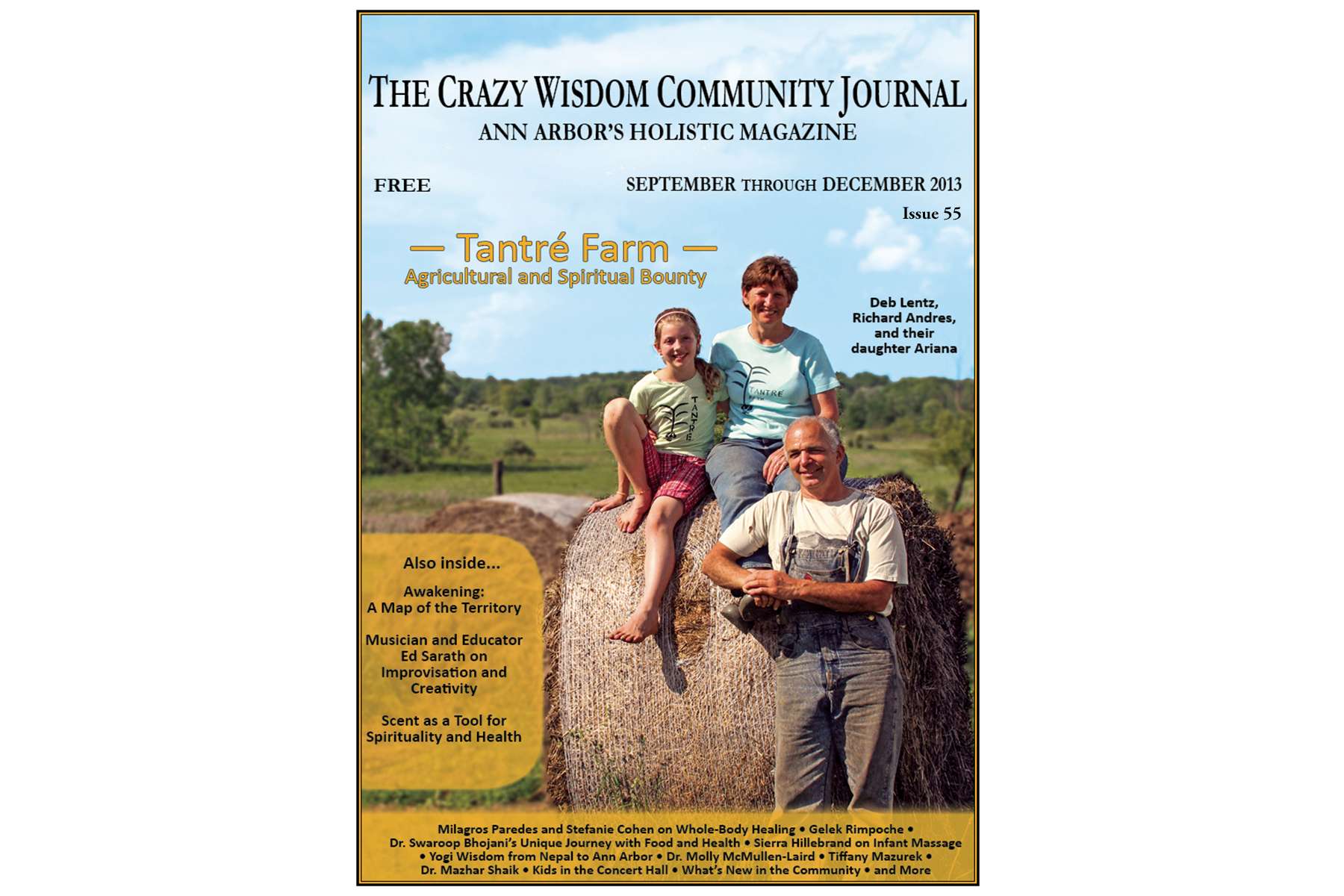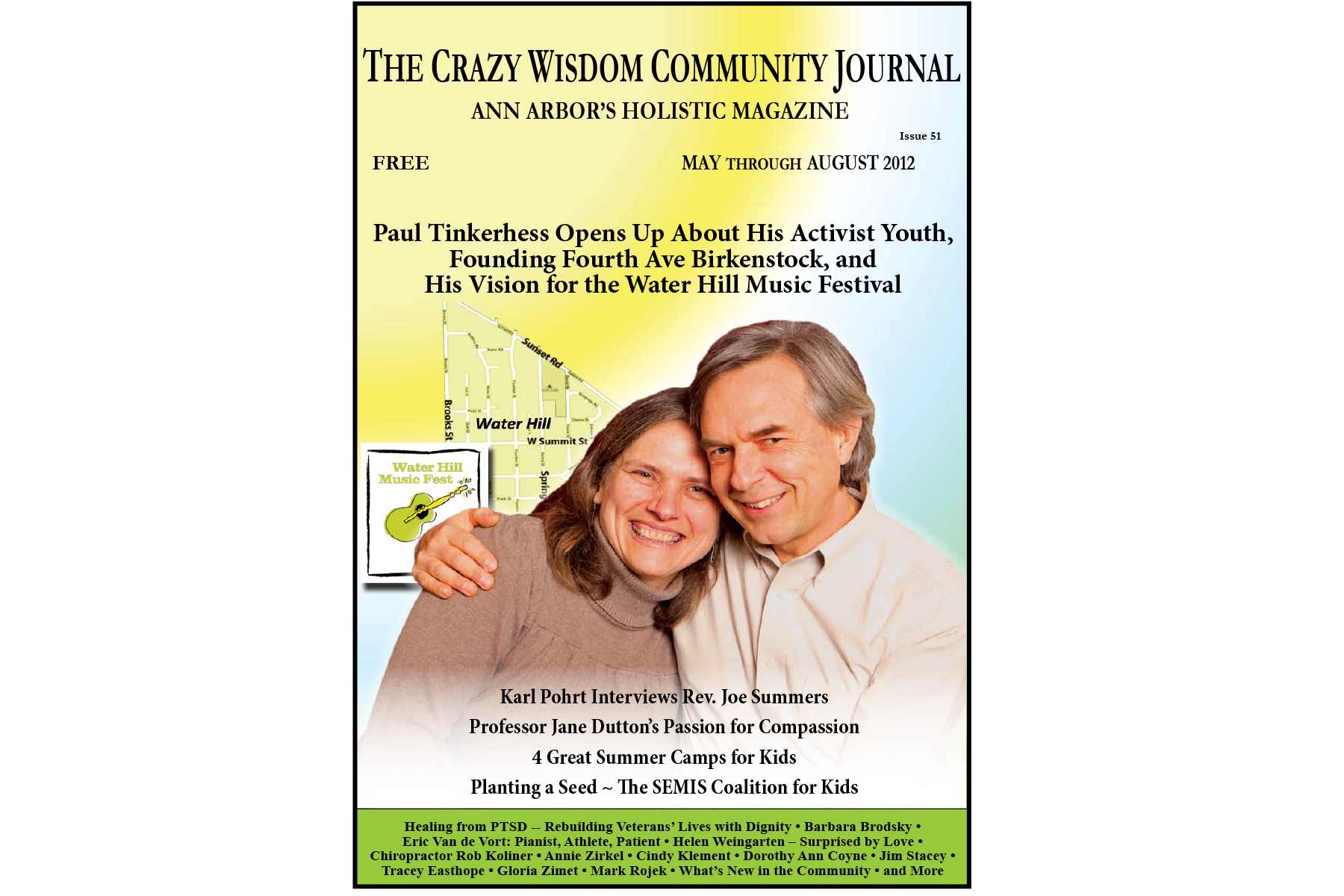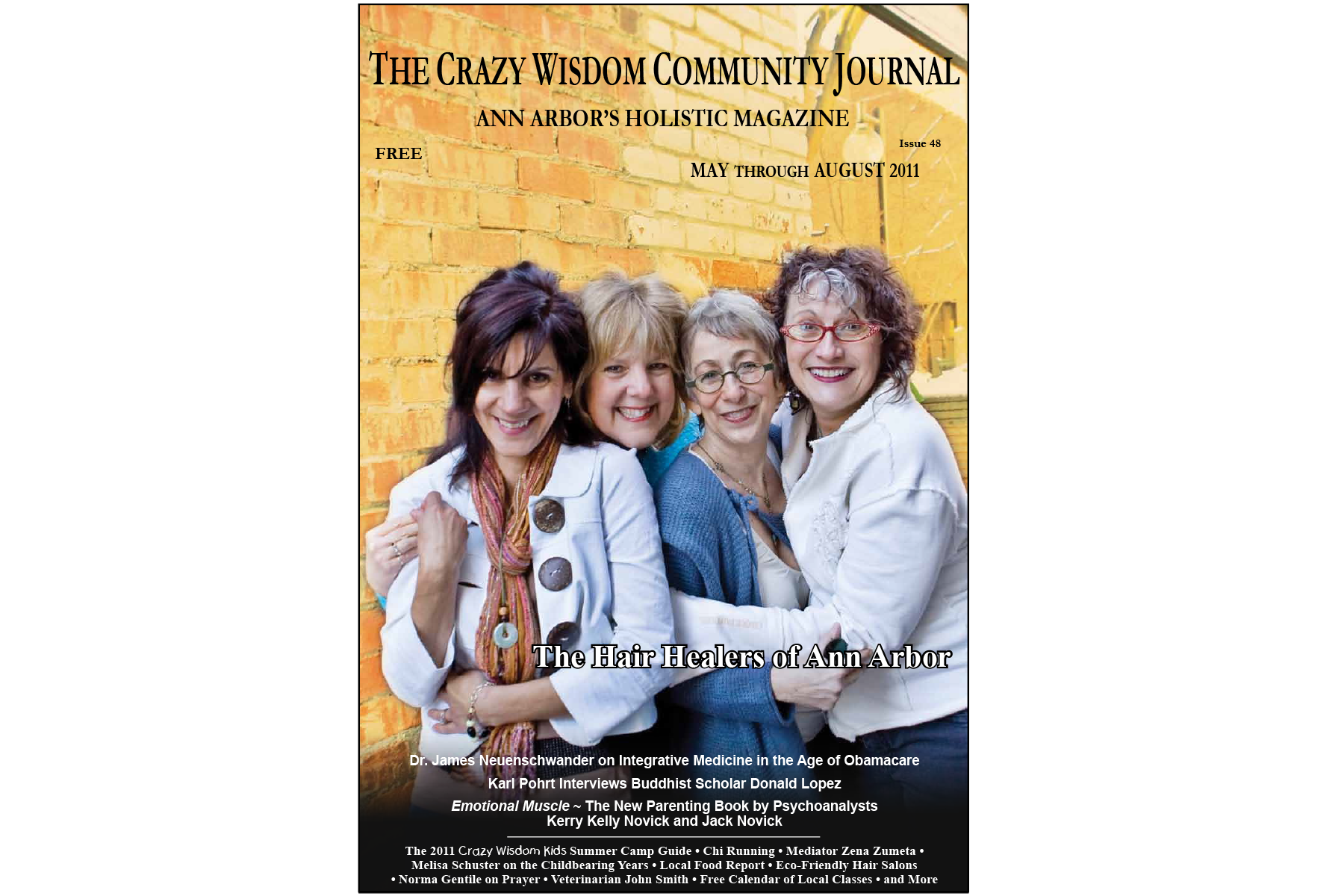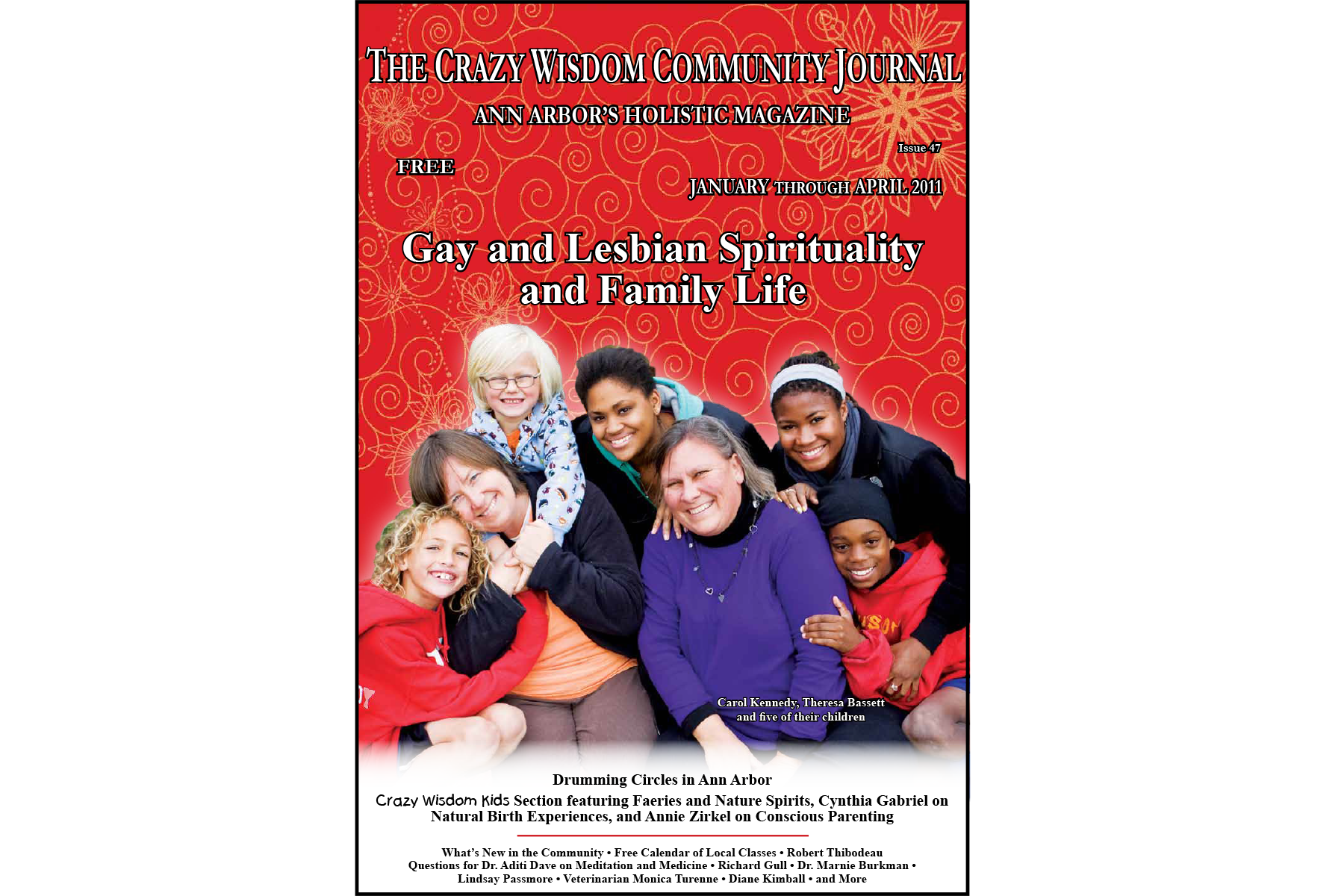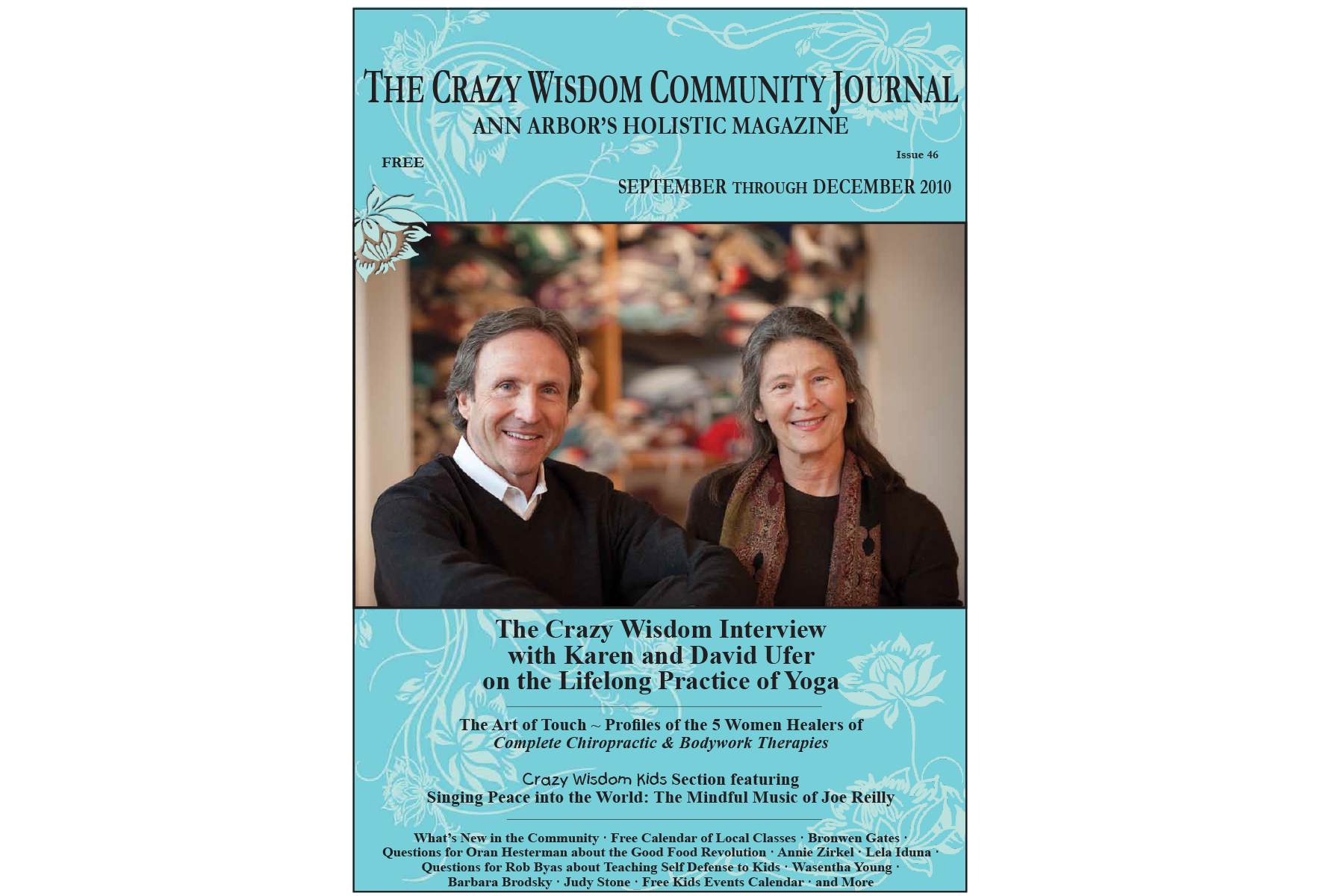Dear Katie — I sit at a desk all day and have found that my shoulders are starting to swoop forward slightly. I’m having a harder time maintaining good posture and want to prevent it from getting worse. Is there a yoga pose or two that could help with this? Maybe something that I could do at my desk as well as something for at home?
Green Living: Growing Visionary Educational Communities
By Ethan Lowenstein
On October 5, 2015, the Detroit activist and scholar Grace Lee Boggs died at the age of 100. I am among the fortunate many who had the opportunity to work and organize with Grace and who were touched by her presence. Grace’s efforts to help young people develop a deep sense of belonging to their communities, and a sense of their own worth through the practice of making their communities more just and loving places, continue to inspire what we do at the Southeast Michigan Stewardship Coalition (SEMIS Coalition). In the face of the social and ecological crises we are currently confronting, and with an educational system that sometimes seems more concerned with test scores than with community, Grace’s educational message and our work at the SEMIS Coalition couldn’t come at a more important time.
I first worked with Grace 15 years ago during Freedom Schooling discussions that were held by the James and Grace Lee Boggs Center, the Detroit-based organization for community leadership and change that Grace founded with her husband, James, in the early 1990s. Grace and her husband were passionate about schools and the role of imagination in change. The discussions drew inspiration from the Freedom Schools in the South during the 1960s and were based on the belief that schools not only needed to teach academics but help young people to develop a sense of themselves as agents of change and decision-makers. The discussions focused on liberating our imaginations to picture schools as they could and should be.
Place-based Education
When asked for advice by an Eastern Michigan University (EMU) student at a talk at EMU some years back, Grace smiled and said without hesitation, “Grow your souls and stay in the same place for a long, long time.” For much of her life, Grace wrote about revolution as an evolutionary process, stressing that the reason past revolutions had failed is because people had not evolved into full human beings, and therefore, once in power, they just reproduced the old system. She saw the role of schools as helping young people become “solutionaries” — people who are skilled at creating beloved communities, who, through being attached enough to their place and thirsty for self-growth, are able to simultaneously transform and heal themselves and their communities.
How we support educators, both classroom-based and community-based, in their work to help youth become solutionaries is one of the critical questions of our time. Our work in the SEMIS Coalition and in the College of Education at EMU has required us to think carefully about growing visionary educational communities in the times that we live in. In the education world, the approach we are using is called place-based education (PBE). In our experience, PBE — using the local community, including the environment, as the primary site for eliciting curiosity, posing questions, and envisioning possibilities and then acting to bring them into the world — is the most promising approach to education given our historical moment. While the PBE approach can be considered good old “progressive education,” aiming to meets the needs of the whole child, what makes it different is its central focus on healing relationships with each other and fellow community members in the natural world (the plants, animals, water), and in our particular place over long periods of time. It’s important to note that this focus on place-attachment and stewardship is not new, however; many indigenous cultures have educated their youth in this way for millennia.
The Southeast Michigan Stewardship Coalition
The SEMIS Coalition works with teachers from over 17 schools and over 25 community partner organizations in the region to help young people become citizen-stewards of their local communities and the Great Lakes. We are part of a larger state-wide organization called the Great Lakes Stewardship Initiative. We use a strength-based coalition model — in which our members contribute their gifts to the commons and express their need for support to fellow community members. We provide intensive supports to adults to learn how to use a place-based teaching approach. These supports include professional development, curriculum coaching, small grants for projects, and a welcoming, nurturing community in which educators can regain some strength, pause, reflect, and be with other visionary educators as they seek their own transformation and the transformation of their schools.
A couple of weeks ago, I ran into a parent of a SEMIS Coalition youth leader. The youth leader was deeply impacted by her SEMIS teachers and membership in the Coalition during fourth and fifth grade, and had done a presentation on her stewardship work in front of 150 adults at the Rotary Club of Ann Arbor. Having given similar presentations to other adults and youth many times prior (through her work at SEMIS Coalition), the student was confident, ethically grounded in her beliefs and love of her place, and articulate about solutions for healing that place. Through her experiences at school, she was able to develop a relationship with the natural world. Unfortunately, now in middle school, her opportunities for connecting to the outdoors have drastically decreased. Her mother lamented that her daughter’s educational experience has been deeply affected by not having recess and access to nature through school.
In the last several years I have been in dozens of schools and spoken with teachers and community-based educators from all over the country. The story is the same everywhere. Recess, the arts, and unstructured opportunities for learning are being removed from the school schedule at a time when it is most necessary for children to be inspired by these experiences.
Grace Lee Boggs was fond of asking “what time is it on the clock of the world?” What reality, at this moment in history, wants to and needs our help to emerge?
On the one hand, we live in a consumer culture that fractures us from what matters most. Many of our children are sped up, wound up, and cooped up in buildings. Testing pressures and a narrow focus on “academic achievement” tell a story of what it means to be human that is based on individualism and competition, not caring and community. Separated from neighbors, nature, and from older generations, children and the adults in their place are generally not being provided the opportunities to, as Grace Lee Boggs would say, “grow their souls.”
At the same time, another story is being told. We live at a time when, if we really pause and listen and sense with others, we can feel a new reality that wants to emerge, and that with a little stewardship from us, will emerge. It is the time of the “great turning” as Joanna Macy would say, an opportunity to transition to a healthier more sustainable world. In the region, there are many educators engaging in hopeful, healing work — who are helping the youth they work with become solutionaries. Ask any SEMIS Coalition teacher, for example, about their work, and they will tell you a story that will fill your heart.
Creating New Community Rituals
Creating new ways of “doing community” and celebrating together is important as we change the way we “do school.” Our year ends with an annual Community Forum held at EMU. At this forum, young people and adults engage in inter-generational dialogue around the social-ecological issues youth and their community partners are working on together. Last year 150 people attended 13 youth-led presentations and workshops at the Forum. When adults see third graders acting and thinking as solutionaries, and high school students from different backgrounds and parts of the region talking to fourth graders about their own leadership development, work and college aspirations — they leave with a different story of what education is and can be —they leave with hope. They also leave with more critical thinking and communication skills than can be measured on any test.
How can you help? Connect with us on Facebook and Twitter (@semiscoalition), join conversations that are happening on our blog (http://semiscoalition.org/blog/), or donate to help students become solutionaries through the SEMIS Coalition. Most of all, have conversations with your neighbors and schools in which you vision what schools can be. Such conversations, sustained over a long time, can change the world.
Dr. Ethan Lowenstein, Director of the SEMIS Coalition, is a professor of teacher education at Eastern Michigan University and the 2015 John W. Porter Distinguished Chair in Urban Education. Before his career in higher education, Dr. Lowenstein taught high school social studies in New York and was the 1996 New York City Board of Education Teacher of the Year for alternative schools. For more information about the SEMIS Coalition or EMU’s teacher preparation program, you can contact Dr. Lowenstein through the SEMIS Coalition website at http://semiscoalition.org/our-people/.
Eve Aronoff's Frita Batidos — Continuing to Bring Cuban Culture to Ann Arbor Five Years After Opening
By Chelsea Hohn | Photos by Susan Ayer
A flurry of trays bursts through a tiny door into the dining area of Frita Batidos, the Cuban-inspired restaurant created by Eve Aronoff. Everything is white — the painted brick walls, the picnic tables, the floors — but the room is vibrant. It’s a Wednesday night, and every single picnic table is full of guests. Pops of color come from the food and drinks around the room and mesh bags filled with limes used as accents for each table. Music fills the rare holes in conversation, and a shuffle of college students, families, and tourists add to a line that is quickly approaching the back of the restaurant.
The staff at Frita Batidos moves full speed ahead to manage the flow, all while maintaining a steady hand and calm demeanor. This is what happens when a restaurant is managed with the precision and specification of chef and owner Eve Aronoff. She has carefully fostered this environment of “artful chaos” since opening the restaurant in 2010.
And things haven’t slowed down. The traffic has steadily grown since Frita Batidos opened its doors, and the staff (some of which who have been there since the first year) have adapted, never compromising the quality of the service or food. Not surprisingly, Frita Batidos has become an Ann Arbor staple.
The restaurant was largely inspired by Aronoff’s love of Cuban culture and passion for taking care of people — a philosophy that was instilled in her as a young child. It was also about creating something special and personal, and cultivating not just a sense of community, but a genuine community that starts with the restaurant staff and extends to the guests. Attentiveness to detail is equally important to Aronoff, whether it’s making sure her ingredients are top quality and locally sourced or maintaining Frita Batidos’ characteristic spirit and playful atmosphere by bringing in elements of Cuba.
Aronoff fell in love with Cuban culture after spending time in Miami and wandering through the many food markets there. Continuing to follow her curiosity, she read more and more about the country’s culture and history. She stumbled upon the “frita” and the “batido” separately, but the “frita,” which was described as a burger made with chorizo and shoestring fries, seemed like a most delicious fit with the “batido,” a blended shake-like beverage.
“Those two together sounded amazing to me,” said Aronoff, “and I thought, Frita Batido…. Frita Batidos!” she laughed, pointing out that it isn’t even grammatically correct. The name stuck, though, and her mind had already been made up — before she had even tried either dish.
It wasn’t until a month before Frita Batidos was set to open in 2010 that Aronoff tried fritas for the first time when she traveled to Miami to conduct taste testing. “I went with my mom and we ate eight fritas that day,” she said. But they were much different from what she was expecting. Traditionally, the frita is served on a grocery store hamburger bun (a far cry from the homemade brioche that she serves at her restaurant), and is topped with potato sticks and American cheese. The whole burger was much saltier than she imagined it would be. “I thought, I’m really glad I didn’t try this years ago because I probably wouldn’t have pursued this,” she said with a laugh.
But Frita Batidos isn’t a traditional Cuban restaurant, and it isn’t shy about that. The menu is really more about Aronoff’s impression of the culture and how it has influenced her personal style of cooking in imaginative ways.
The spirit of Cuban culture made the biggest impression on Aronoff, and she’s brought that into the space of Frita Batidos through small and playful details. The communal tables, for example, encourage conversation between guests and often spark conversations among strangers. Guests can also play a game of dominoes, the national game of Cuba and an activity commonly played across parks in Miami.
The ordering window at Frita Batidos is also an attribute that was inspired by Cuban culture, where guests customarily order through an open window at restaurants. For Aronoff, this was a must-have feature for Frita Batidos. She admitted that in Michigan the window doesn’t get as much use as she would like it to, but it’s these type of details that have become the defining elements of Frita Batidos’ charm.
When creating the restaurant, Aronoff also thought back to one of her first jobs — working as a hotdog vendor at Fenway Park in Boston. The convivial nature of that job was quite different from what she experienced while receiving formal training at Le Cordon Bleu in Paris. She finally realized with Frita Batidos that she could bring all of these things together. “The spirit of the hotdog car, the attention to detail, the passion I have about food and taking care of people, the way I was brought up — bringing those together to create their own thing — that’s Frita Batidos.”
Another practice she took to the restaurant’s kitchen was something she learned in childhood. Aronoff grew up with a mother who loved to cook, and in a way that often resulted in Aronoff trying more food than she ended up eating. At Frita Batidos, any dish being made has to be tasted by at least two other people than the person who’s making it — again, creating an inclusive environment even in the back of the house. She also caught on to her mother’s caring spirit, after seeing the joy she would get from taking care of her children. Aronoff recalled that if she and her siblings all wanted four different dinners, her mother would make four different dinners. If all of them finished and were still hungry, another dinner would be on the way. If she was sick, her mother would call and ask what she wanted — “Richie Rich comic books and tomato soup,” she laughed. Her mother’s care ended up being the biggest culinary influence for Aronoff.
Running a successful restaurant is difficult enough, but for one that values customer service, food quality, culture, and sustainability in the way that Frita Batidos does, challenges must be met with a certain amount of creativity.
“We know what our values are. We see how close we can come to that without [ignoring] the practical concerns we have as a restaurant, and just keep trying to work to get closer and closer to meeting those values,” Aronoff explained. Their values are hardly compromised, which only adds to the number of struggles that come with having high standards. In addition to sourcing locally for ingredients, all of their utensils are from Green Safe Products in Detroit, added the kitchen manager, PJ Johnson.
Sourcing locally means supporting local agriculture, but small farmers have to sell produce at a higher price point, resulting in a higher price for menu items. “You have to find a way for guests to appreciate that and understand why this might be a little more expensive but still be a great value for all the different kinds of taste,” said Aronoff.
Even space can be a challenge; the Frita Batidos kitchen is tiny, and there is only one door. “Everything comes in the front door and out the front door,” Aronoff laughed. They have added onto the kitchen since opening, and the workflow has become much smoother, and they continue to fine tune the processes as they go along. This is part of what Aronoff thinks makes a good chef and what’s necessary to run a successful restaurant. Being open to critiques and using them to create positive change is part of the daily life at Frita Batidos, from listening to customer feedback to having weekly staff meetings that build community within the restaurant.
“Is there any way we can make it a little bit brighter in here?” a woman sitting at one of the many tables inside of Frita Batidos asks one of the servers. He politely says yes, and within a few minutes the lights slightly brighten. The woman goes back to the group she’s with and continues to eat.
Cultivating a community in a small space takes more than just sandwiches and the right décor — it takes dedication to creating that atmosphere and making it the foundation around which everything else is built. Aronoff and her team make a point to build a staff that shares similar values — people who are passionate and view paying attention to details as rewarding rather than burdensome, and people who generally enjoy taking care of others. Frita Batidos successfully bridges the gap between high quality food and an informal setting, while managing to support local agriculture and uphold an environment where guests feel comfortable asking one another to pass the salt. It is no wonder the line frequently extends towards the back of the restaurant.
“This is where I take people when they come in from out of town,” one man says as he devours a plate of fries. Meanwhile, another guest walks in.
Frita Batidos is located at 117 W. Washington Street, Ann Arbor, Michigan 48104. You can view the menu on their website at www.fritabatidos.com.
Great Tastes in Local Food: Back2Roots, Salads Up, Grillcheezerie Sandwich Shoppe
By Crysta Coburn
Back2Roots Bistro
When I am in downtown Ann Arbor, out-of-towners often ask me for recommendations on where they should eat. Ann Arbor’s Main Street area offers up a lot of choices when it comes to dining. In fact, if you are looking for an all vegan restaurant, it offers one of the best choices in town — Back2Roots Bistro. Neighboring Vinology and Crazy Wisdom, Back2Roots opened in August 2015 (in the former location of Jazzy Veggie). The space underwent quite a transformation with the opening of Back2Roots. The decorations are simple, the walls painted neutral with pops of color coming from the beautiful paintings, and the furniture is comfortable. The menu at Back2Roots bears a slight resemblance to its sister restaurant, Hut-K Chaats (on Packard), but Hut-K specializes in more Indian flavors. Both restaurants are owned by Dr. Swaroop Bhojani, who came to the world of restaurant ownership from a background in medicine and cancer research. [An article about Dr. Bhojani and his unique journey with food and health was published in issue 55 of CW Journal, available at crazywisdomjournal.com.]
The completely vegan, GMO-free menu of Back2Roots reflects Dr. Bhojani’s continuing mission to provide healthy, nutritious food to the community. Many of the ingredients are also served raw, and the added texture is a delight, from crunchy bok choy to soft soba noodles. I eagerly dug into the delicious Asian Dragon Bowl, composed of sautéed vegetables and topped with a lovely array of greens and a sweet Asian marinade, while my fiancé opted for the more conventional Southwestern Black Bean Burger with a side of chili. As promised by the menu, both dishes were packed with bold flavors that blended together magically.
During the meal, a smiling server stopped by our table with a sample of one of their signature beverages — the Power of 7, a fresh blended juice of baby spinach, baby kale, baby chard, rice milk, pineapple, dates, and limes. I also sampled the mango smoothie. I liked them both so much that I was a little sorry I hadn’t been bolder when we were seated and ordered one of them. Instead, I had opted for a hot cup of Assam tea, though I was tempted by the Darjeeling. (Confession: I love tea! And I especially love when I am offered choices beyond the simple black or sweetened you find at most restaurants.) Back2Roots also offers a short list of “rotating elixirs,” like thyme and raspberry, dandelion and lime, coconut and tulsi, and chrysanthemum (ask your server which are available during your visit).
Back2Roots delivered an all-around enjoyable dining experience, and is a must-try (even for non-vegans)! Simply put, you will feel good eating the food. The body knows what’s good for it and will respond to what’s put into it accordingly, but sometimes the taste buds take charge and lead us astray. Thankfully, at Back2Roots, this is not an issue. Among a menu of options crafted with your nourishment and health in mind, your taste buds can only serve you well. (And they will be happy, too!)
Back2Roots is located at 108 South Main Street in Ann Arbor. Their hours are Monday through Saturday from 11 a.m. to 9 p.m. You can peruse their menu online at www.back2rootsbistro.com.
Salads Up
It is a boon and a compliment to a city when its graduates choose to stay after graduation. So much more so when they open a business and add to the flavor of the community. Salads Up, located next to the Michigan Theater on Liberty Street in Ann Arbor, is just such a blessing. Owners Robert Mayer and Max Steir graduated from the University of Michigan in 2013 and opened their restaurant’s doors in December of 2014.
Picture a Coldstone Creamery, only instead of ice cream, it’s salad. (Bear with me.) You can choose one of their pre-designed recipes, like the Heapin’ Harvest, which consists of romaine lettuce, roasted chicken, sweet potatoes, organic barley, red onion, and green apple — or you can build your own. Whatever you choose, the person behind the counter will make the salad fresh — first combining all the ingredients in a large mixing bowl, then moving to the next station to chop and mix all the ingredients together. (Now do you see the Coldstone connection?) Once mixed, the ingredients are then added back to the bowl and tossed with the dressing of your choice. If you order it to go, the salad is scooped into a plastic to-go bowl with a lid that will keep your salad fresh in your fridge for days (I’m not exaggerating). If you’re eating in-house, the salad is put into a re-usable bowl so you can take the rest home for later. We’re not talking side-salad size — this is a meal! (Or three.)
There are a few beverage options, such as the house made cold-pressed juices, which are divided into four types: Up1 (watermelon, apple, mint); Up2 (kale, pineapple, cucumber, celery); Up3 (carrot, orange, ginger); and Up4 (beet, pear, lime). For dessert, Salads Up offers Greek frozen yogurt.
Despite being a salad place, Salads Up is not all vegetarian or vegan. The Heapin’ Harvest includes roasted chicken and the Beef’d Up has steak. You can also choose shrimp or strips of turkey bacon. I don’t think I have ever had steak on a salad before, but I enjoyed the Heapin’ Harvest so much that I feel pretty confident these people know what they’re doing, and I am willing to give it a try.
Salads Up is a unique and healthful addition to the Ann Arbor foodscape. Service is quick and seating is ample. You may also order ahead of time for pick-up if you are low on time. If you don’t want to make the salad the entire meal, or are headed to a pot luck, I would suggest getting a salad to-go. There is more than enough to share with a small group, and any Salads Up option is bound to be more nutritious than potato salad.
Find Salads Up at 611 E. Liberty Street in Ann Arbor and online at www.saladsup.com. They are open Monday through Saturday from 11 a.m. to 10 p.m., and 12 p.m. to 9 p.m. on Sunday.
Grillcheezerie Sandwich Shoppe
One of my favorite friend gatherings is “Fancy Grilled Cheese Night.” Every now and again, a few friends and I get together to create grilled cheese sandwiches that go beyond simply buttered bread and cheese. Fancy grilled cheese sandwiches are pretty easy to make at home, but gathering special ingredients like fontina cheese, braised beef or oven-roasted Dearborn ham, caramelized onions, tomatoes, and parsley pesto takes planning and maybe a special trip to the grocery store.
The Grillcheezerie Sandwich Shoppe to the rescue! The cheese is fresh off the block (how many of us bother with block cheese when we grill sandwiches at home?), the chicken is free range, and as many ingredients as possible are sourced locally. The pickles are McClure’s (Detroit), the potato chips are Great Lakes (Traverse City), and next to the cans of Coke you will find Vernors and bottles of Faygo. (I only wish they called it pop rather than soda.)
Any style of grilled cheese sandwich can be found on the menu. For the mushroom lover, there’s the Shroom, stuffed with Muenster and goat cheeses, roasted wild mushrooms, and parsley pesto on whole wheat bread. (For a dollar more, you can substitute with gluten-free bread, which is really quite tasty! It crisps up perfectly, and I didn’t notice much difference from conventional wheat bread.) The first sandwich I ever tried at Grillcheezerie was one I built myself: Muenster, chicken, caramelized onions, and mushrooms. Building your own sandwich is probably the most fun, even with signature items like the Honey Apple, the Mighty Beef Melt, and S’Mac and Cheese. Yes, it’s a grilled cheese sandwich with macaroni and cheese on it.
If you like mac and cheese, you don’t have to get it between two slices of bread. The Grillcheezerie also makes its own fancy mac and cheese as well as some delicious soups. Their roasted garlic tomato is some of the finest around. For dessert, I recommend the s’more bread pudding because after a meal of classic American grilled cheese, mac and cheese, and tomato soup, it doesn’t get much more comfort foodie than s’mores or bread pudding.
There is enough seating inside the Grillcheezerie to accommodate a few small groups, and parking spaces can be found out front on Packard and State streets or for free in the adjacent neighborhoods. I personally love that they deliver. Many times now I have been rescued by a hot grilled cheese sandwich and soup while stuck alone at work. Order through the website or over the phone.
Grillcheezerie Sandwich Shoppe is located at 709 Packard Street in Ann Arbor, near the corner of State and Packard. Find them online at www.grillcheezerie.com or give them a call at (734) 368-9229. Hours of operation are 11 a.m. to 11 p.m. Sunday through Thursday, and 11 a.m. to 1 a.m. Friday and Saturday.
The Hidden Cost of MSG Derivatives: A Q&A with Jenna Wunder, Registered Dietitian
By Julianne Linderman
For many of us, the verdict on MSG is still not clear. We hear that some of it is naturally occurring and therefore not dangerous; that only those with a sensitivity are susceptible to reactions; that avoiding products labeled as containing MSG is enough to steer clear of it, and so on. Please help us navigate some of this information by giving us a quick rundown on what MSG is and what’s dangerous about it.
The conversation about MSG is confusing, even for trained nutritionists. Let’s start with a short discussion about amino acids and proteins.
Glutamic acid is a non-essential amino acid, meaning that our bodies produce it naturally. Amino acids are the building blocks for proteins. They are necessary for building muscle, organ, and all body tissue, and they also aid in digestion. Glutamic acid is produced in the brain and is vital in the transmission of nerve impulses. Virtually every food contains glutamic acid. It’s a primary component of protein-rich foods like meat, eggs, poultry, milk, cheese, and fish. Glutamic acid is also found in plant foods.
In whole, natural foods, amino acids are almost always “bound” in long chains, forming proteins. “Unbound,” or “free glutamic acid,” is artificially and chemically produced outside of the body. This is what is known as monosodium glutamate (MSG), or processed free glutamic acid.
In chemical plants where MSG is manufactured, bound glutamic acid is broken down into a fast-acting, high-hitting powder resembling other refined white powders, like salt and sugar. Serious inflammatory reactions can occur as the free glutamic acid is absorbed rapidly.
The reason MSG tastes good as a flavor “enhancer” is what makes it toxic. It tricks your taste buds, and as it excites neuron receptors, it becomes toxic and inflammatory, causing a range of health effects. MSG is not a food, and neither are its derivatives; they are “excitotoxins.”
What are some of the common reactions it causes?
In those who are sensitive (up to 25 percent of the population, according to current estimates), the health effects can be wide ranging: cardiac, circulatory, neurological, gastrointestinal, respiratory, skin, and urological.
In my clinical practice as a registered dietitian, I always say that every body responds differently. I might respond with heart racing, insomnia, and headaches, while someone else may respond with digestive concerns like diarrhea and/or constipation, rashes, mental fog, anxiety, chronic congestion, or even weight gain. The list goes on. The effects are cumulative, so sometimes people who are otherwise healthy don’t realize that part of their distressing health symptoms are related to free processed glutamic acid floating around the body.
For you, the reactions were still occurring even after you thought you had eliminated MSG from your diet. What was happening?
In 2013, I was in the middle of a health crisis. Suffering with a racing heart, migraines, and severe chronic insomnia night after night, I knew I had to get to the bottom of what was causing my issues. I knew I was sensitive to MSG, having previously discovered it contributed to migraines and insomnia, but I thought I had already cut it from my diet.
Desperate to help myself, I Googled “other names for MSG” and found a document called “Hidden Sources of MSG” (which can be found here: www.truthinlabeling.org/hiddensources.html). This article enlightened me to the fact that MSG, or processed free glutamic acid, is also in at least 40 other ingredients. As a society, we are unaware of this incredibly pertinent information!
Why is simply buying organic or avoiding products labeled as containing MSG not enough?
Organic labeling or where you buy these foods doesn’t matter. I have many patients tell me “but I only shop at Whole Foods” or “but it’s organic.” Unfortunately, “natural flavor” (which can be one of the names of free processed glutamic acid) remains “natural flavor” even if it is from a carton of organic chicken broth.
Tropicana orange juice is another example. Why can it contain oranges from anywhere, from any time of year, and always have the same taste? Because of a test tube of Tropicana “natural orange flavor” that was made in a laboratory. These kinds of chemical additives, “natural” or not, standardize tastes and are designed to keep you coming back for more!
What are some common ingredient names that people should watch out for?
I keep this document in my purse: www.truthinlabeling.org/hiddensources.html.
I can be found teaching fellow shoppers about this topic at grocery stores on the fly. The most important action is to read labels. Anything that you can’t pronounce is a potential hazard.
Anything “hydrolyzed” or “autolyzed”
Anything containing “enzymes”
Whey protein — watch out for protein powders and protein bars
Maltodextrin
Anything that contains “natural flavors”
Carton broths and bouillon
Reduced-fat milk products (skim, part-skim, ½ percent, 1 percent, or 2 percent)
Anything “fermented,” especially commercially fermented
Vinegar (for highly sensitive people)
Most soy sauce
Yeast extract
Carrageenan
The list goes on.
How has your diet changed?
My diet has changed exponentially. Now I eat a strict whole foods diet that, for the most part, I cook myself. I buy high-quality animal products, ones where cows have been 100 percent grass-fed and chickens have been pastured and fed organic feed. I buy full-fat, raw milk dairy products from the Family Cooperative Farms here in Ann Arbor. I buy high-quality animal products from Arbor Farms on Stadium. I eat out in only a few select restaurants in town (Zingerman’s, Grange, EAT, Frita Batidos, and El Harissa have many safe and delicious options), and I make sure that my food is free of gluten and preservatives.
My health crisis was two years ago. I have become my own research study on how to avoid free processed glutamic acid in totality. In the meantime, I am healing my gut using a homemade, whole foods diet that includes meat broths, plenty of high-quality animal-based saturated fat, fruits and vegetables, and small amounts of grains.
What are some more examples of foods that don’t contain free processed glutamic acid?
Whole, unprocessed foods: high-quality, unprocessed meat; fruits and vegetables; whole, gluten-free grains; raw and organic nuts and nut butter; raw dairy and dairy products from exclusively grass-fed cows. Whole Foods sells sliced turkey breast and unprocessed ham at their deli counter. There are cheese manufacturers who don’t add enzymes to their dairy products. Homemade meat broths that have been cooked for shorter amounts of time (4 to 6 hours) are also a wonderful choice. (Cooking broths for longer times increases the glutamate content, which may cause sensitive people to have a reaction.) I am forever grateful for the companies who don’t add MSG derivatives to their products. They are heroes in my life.
MSG derivatives can be one of the pieces in your health and wellness puzzle. After going through my own health crisis, I am determined to help others experience the wellness that is available through conscious dietary choices and sustainable changes.
Let food be thy medicine.
Jenna Wunder is a registered dietitian and Certified GAPS practitioner at Natural Balance Wellness Medical Center in Ann Arbor. To contact her, call (734) 929-2696 or visit the clinic website: www.nbwellness.com. For more information on MSG derivatives, visit www.edenfoods.com/articles/view.php?articles_id=207. www.truthinlabeling.org/hiddensources.html.
Intentional Leftovers — Always Cook for More than One Meal
By Liza Baker
Winter is prime time for getting our kitchens in order and cooking from scratch — colder weather tends to keep most of us indoors, and if we really listen to our bodies, we often find ourselves craving heavier dishes — perhaps soups and stews made of red meat in place of grilled fish or chicken, denser root vegetables in place of fresh salads. Energetically speaking, we are balancing out the buoyant, outward facing yang energy of summer, redirecting it to the more subdued, inward facing yin energy of winter.
The part of my health coaching work that I call “kitchen coaching” supports my clients in reclaiming their kitchens and “flipping” them so that they can make 21 meals a week from scratch, even if — like me — they work more than full-time and manage a family “on the side” (the Mom/Dad shift is in and of itself way more than full-time).
Cooking from scratch at home can be the first step to changing our health — done right, it can also save lots of money and chip away at the vast amount of food (reportedly 40 percent!) that gets thrown away in America, cluttering our landfills, creating greenhouse gas, and wasting the precious natural resources that went to grow it in the first place. Reclaiming our kitchens helps us keep an eye on the triple bottom line: the health of our bodies, our environment, and our economy — the local one as well as our own time and money budgets.
To flip a kitchen, it’s important to start with the basics — from knowing what to stock in the pantry to buying and caring for a good quality knife, from choosing seasonal ingredients to storing them, from batch cooking “building blocks” to getting three meals out of a single chicken.
One exercise I love to do with my clients is deconstruct recipes — really pick them apart into a few core ingredients, steps, and techniques. Ironically, this ultimately frees them from recipes because they learn to substitute what’s in-season locally. And if they have a properly stocked kitchen, they can do it without wasting precious time and fuel running to the store. Perhaps even more importantly, clients begin to realize that what they thought were leftovers — cooked meats, beans, grains, and vegetables — needn’t spoil in the fridge: they are ingredients for a quick meal on a busy weeknight!
This can happen in one of several ways: we can cook a large number of finished dishes that we then refrigerate or freeze to reheat and eat later (think chili and lasagna), or we can batch cook what I call “building blocks” — stocks and sauces, beans and grains — that can become part of a meal later in the week. But these options assume that we can take two to three hours on the weekend or — even less likely — on a weekday to accomplish this.
The first option also assumes that you (and your family) like leftovers. There are many people who do, but as a rule we tend to think we do … and two days of chili later, it suddenly doesn’t look like what we had in mind for the rest of the week! Add to that two kids who will turn their noses up at anything served reheated, and I needed a new system.
My favorite trick is what I call “creating intentional leftovers” — preparing more of the ingredients you’re already cooking on any given day. If you’re roasting a chicken, why not roast two? If you’re making a pot of rice, why not double or triple it? If you’re steaming broccoli, why not steam extra? Then we explore ways that these “intentional leftovers” can be combined into quicker meals later in the week.
This isn’t rocket science — it’s not even food science unless I have to explain that we have been terrorized into believing that any food left in the fridge for more than 24 hours is bad (that’s a whole different article!) — but it can be eye-opening, so I’d like to offer two examples: one idea for grains and one for chicken.
Brown Rice:
Serve steamed brown rice as part of dinner on Saturday — make lots!
On Monday, mix some rice with a beaten egg and a bit of flour until the mixture holds together and can be formed into patties. Cook in a little bit of fat and serve over greens with a poached or fried egg on top. If you’re ready for the graduate level version, add cooked beans and/or minced cooked leftover vegetables to your patties.
On Wednesday morning, mix some rice with twice as much liquid (water? milk? milk alternative?), cook into a porridge, and serve hot with maple syrup, chopped apples and walnuts, a dash of sweet spice (cinnamon? cardamom? both?) and a bit of sea salt.
On Friday (yes, I promise the rice is still good if you’ve kept it properly stored in the fridge), mix the remaining rice with some marinara sauce (leftover, of course) and stuff it into hollowed-out peppers and bake them.
Chicken:
On Saturday night, make a roast chicken (or two or three — the oven’s on anyway!) and after dinner, pull all the leftover meat off the bones. Save all the bones — yes, even the ones you gnawed on — in the fridge or freezer.
On Sunday, make chicken stock from the bones, and make chicken soup with some of the meat plus noodles or rice (or whatever leftover grain you have).
On Tuesday, mix some of the meat with vinaigrette and serve it over salad greens.
On Thursday, make chicken salad with any remaining meat and have a wrap or sandwich.
Oh look! It’s been a week, and you just finished the rice and chicken without simply serving it reheated a single time. Even the teenagers will never know.
The recipes for the dishes included in this article can be found at http://is.gd/CWJRecipes. Liza Baker is an integrative nutrition health coach, kitchen coach, and household manager of a family of four. She brings her passion, knowledge, and experience to the table to help clients reach their goals and achieve optimal health. You can find her upcoming events in the Crazy Wisdom Calendar (found at the back of every issue) and on her website, http://simply-healthcoaching.com/. She can be contacted at simplyhealthcoaching.lizabaker@gmail.com.
Children’s Book and Media Reviews
By Sarah Newland, Waldorf parent of two children, ages 9 and 17
Ganesh’s Sweet Tooth
By Sanjay Patel and Emily Haynes
This is not a retelling of the classic legend of how Ganesh broke his tusk, though it is loosely based on the story. Some elements and scenes in this book are not found in Hindu mythology (the super jumbo jawbreaker laddoo!), and certain plot points were changed to develop an original, fun picture book. It will entertain and inspire readers to learn even more about the rich and varied stories of Hindu mythology.
$7.99
Tree of Wonder: The Many Marvelous Lives
of a Rainforest Tree
By Kate Messner and Simona Mulazzani
This is a lush and fascinating book about the rainforest’s abundant beauty and the wonderful multiplicity of life sustained by just one almendro tree. Your child will search and count through each page while learning scientific facts about each animal.
$16.99
A Rock is Lively
By Dianna Hutts Aston and Sylvia Long
A book about rocks and crystals for kids! Sometimes a book comes along that is just perfect for Crazy Wisdom. This is one of them. Beautiful pictures combine with just enough facts to keep slightly older children interested. Fun for budding geologists.
$7.99
Swan: The Life and Dance of Anna Pavlova
By Laurel Snyder and Julie Morstad
One day, Anna’s mother takes her to the ballet, and the girl’s simple life is changed forever. Anna grows up to become the most famous prima ballerina of all time. The elegant style of these drawings are captivating, and the book is perfect for slightly younger kids interested in dance.
$17.99
The Categorical Universe of Candice Phee
By Barry Jonsberg
Candice Phee isn’t your typical 12-year-old. She has more than her fair share of quirks. But she also has the very best of intentions and an unwavering determination to make sure everyone around her is happy. Which is no easy feat when you’re dealing with a pet fish with an identity crisis, a friend who believes he came from another dimension, an age-old family feud, and a sick mom. But she is on a mission. This is a heartfelt and fun book for middle schoolers.
$6.99
Flower Heaven
By Else Wenz-Vietor
In the Waldorf tradition of Elsa Beskow, this lovely little book is about what happens to plants and flowers once their petals have been plucked or uncared for. The angels in flower heaven nurture and heal them, of course!
$16.95
French Dreamland cd
By Putumayo World Music
These charming lullabies will transport you to the lavender-scented French countryside. Wonderful for Francophile parents, too!
$13.95
Events Calendar for Kids • January through April 2016
Conscious Parenting: Ten Tips for When Your 'Gentle Parenting' Is Going Out the Window
By Catherine Fischer
As parents, we’ve all been there, or we will be someday. Our busy lives create lots of pressure. It’s awful when the patience, perspective, mindfulness — or whatever we have been working to sustain or cultivate — just slips away from us. It may feel like everything is fine until, suddenly, it’s not. Or, we know we are on a downhill slide but feel helpless to stop it. Either way, we end up saying or doing regrettable things, and it feels terrible. This is not what we hoped for when we became parents!
Five Tips for When You Are About to Lose It
1. Check in with Yourself
As parents, sometimes we set aside our needs to the detriment of ourselves and our children. Have you heard of HALT? It’s a simple mnemonic to help you check in with yourself when you are feeling bad. Are you Hungry? Angry? Lonely? Tired? Sometimes asking ourselves these questions can help us notice that the root of our bad feelings isn’t actually our children!
2. Lower Your Standards
Are we trying to do too much? Are our expectations too high for ourselves and our children? Sometimes a little flexibility can go a long way.
- Can you simplify the meal you are making?
- Can you stop fighting with your children about what to wear and let them dress themselves?
- Can you let some of the housework go?
- Can you allow yourself to be late to where you are headed? Do you need to change your plans altogether?
- Can you wait a little longer for your child to turn off the TV/computer?
3. Take a Time Out
If it is safe for you to leave your children unattended briefly, you can go into another room by yourself and “let the upset out” without directing it at your children. Cry or yell into a pillow, hug a teddy bear. If you can’t walk away, you can simply try to take a deep breath.
4. Connect with Someone
Find someone to vent to (or with) when things feel out of control. Tell someone you trust about the struggles you are having. Ask if you can call, email, or text them to vent when you are upset. You could even pre-program a phone number into your phone, and then ask your children to tell you to call that person if you are getting too angry, or have them call the number themselves. Your children probably know your warning signs better than you do!
5. “Give Up”
This one might sound off-the-wall, but consider the alternative. You already know that you might yell or hit and you don’t want to. When all else fails, try lying down on the floor. It will literally give you (and your children) a new perspective.
Five Tips for After the Crisis
When the crisis is over, or better yet — averted, we often move on without much chance to think about next time. Usually we hope that we will stop ourselves next time, or we simply decide, I’m never doing that again. Sometimes, though, a decision isn’t enough to hold up in the face of the intense emotions of parenting. So, as difficult as it can be to find or make time for ourselves and our emotions, sometimes we can’t change the behavior until we get help with the emotions.
6. What Was Happening in Your Life When You Were That Age?
If you are having a particularly challenging time with your parenting, it might be worth thinking back to what was happening in your life when you were the same age as your child. Sometimes we can have an aha moment when we realize that, when we were that age, we moved, or our parents got divorced, or we started school and hated it. Those memories and the accompanying feelings shape how we feel about what is happening in the present. By becoming conscious of them, and perhaps having an opportunity to resolve those old hurts, you will find that responding to your children with patience and understanding becomes easier.
7. Do You Need to Set Different Limits?
When it’s time to set a limit for our children, we may ask “nicely” and become frustrated when our children don’t respond to our pleasant tone or our reasoning. Sometimes parents then flip over into harshness because they are so frustrated. Rather than trying to be “nice” and “reasonable,” try going for “kind but firm.” Don’t expect your child to agree to the limit. You may need to listen to your child be upset about the limit, and that’s okay.
8. Find a Support Group
It’s okay to need help with our parenting. Do you need information? Support to know that you are not alone? There are lots of parenting support groups and classes around … explore until you find one that is a good fit for you.
9. Be Gentler with Yourself
The harshness toward our children comes out after we have experienced harshness ourselves, either as children or in our adult relationships. I also think that just living in the U.S. means that you are facing harshness as a parent. If we are beating ourselves up in our own heads, eventually it will also come out at our children. Considering everything that’s happened in your life, you are doing the best you can. You can want to do better without being hard on yourself.
10. Find a Listening Partner
One awesome way to do the venting and reflecting necessary for change is to set up a “listening partnership” with another parent. The basics are simple: you take turns listening to each other for equal amounts of time … no advice, no jumping in with our own story, just listening and remembering that this other parent is doing his or her best. And so are you.
Catherine Fischer, M.A., C.P.D., helps parents learn strategies for the emotional challenges of parenting with consultations, support groups, and classes. She is also a birth and postpartum doula. You can find out more at SupportForGrowingFamilies.com or by emailing catherine@supportforgrowingfamilies.com.
A Test of Character — The Immeasurable Impact of the Arts
By Truly Render
I read a headline in The Onion recently that hit close to home: “Struggling High School Cuts Football — Nah, Just Kidding, Art It Is.” As a 2004 college grad, I’ve spent the bulk of my professional life to date weathering the financial storm in the nonprofit arts world. And while the headlines focus almost exclusively on dried-up dollar amounts from government, corporate, and individual giving sources, there is a larger issue at play causing serious repercussions to our cultural landscape — cuts to arts education.
When Bush introduced No Child Left Behind in 2002, standardized test preparation became paramount, sucking resources dry for everything else. So the eighth grader in 2002 is now the 26-year-old who looks at an orchestra concert, art exhibition, play, or a dance performance and scoffs, “This isn’t relevant to my life, this has nothing to do with me.” And they’re right. At best, cultural outings for many millennials are a reason to dress up and do “something fancy.” Our country has failed to raise these individuals with a shared language to think and talk about their own culture. Worse still, this approach to education reinforces discomfort with the grey areas of open interpretation, emotion, and unfamiliarity instead of building a student’s capacity for these 21st-century skills.
Perhaps the weirdest side effect of No Child Left Behind has been arts advocates turning to neuroscience to justify their existence. We can’t cut the music program — not because music is a timeless and essential thread in the fabric of human existence — but because learning to play an instrument improves executive functioning, focus, and the ability to multi-task. We can’t cut the art program — not because “visual” is our species’ first language — but because art benefits literacy skills. Creative endeavors are now categorized, justified, and defined as a means to a more important end: testing.
I’ll risk being a “bad” advocate here: the arts never helped me take a test. I was heavily involved in the arts as a high school student — choir, solo & ensemble, theater, media arts, and creative writing club. And while these activities were the reasons that I came to school most days, I consistently tanked at standardized tests. A verbal processor, I craved informed conversation around subjects of inquiry. True or false reasoning in a silent room stifled my synapses and created a sort of blinding anxiety. It still does.
While the arts failed me in the realm of standardized testing, my high school arts education provided me with incredible learning moments; specifically, drama club and choir built my character in ways that have had a direct impact on my career trajectory and successes.
A snapshot of my drama nerd creds: president of Drama Club my senior year; cast in every play and musical throughout my high school career; wrote and directed one-act productions; produced/directed a 9-hour production/fundraiser called Theater-A-Thon. There may even have been some miming involved. I was in deep.
As much as I loved theater, most of the time I wasn’t the star of the show. During our production of Camelot, I auditioned for the role of Morgan le Faye but wound up as a dancing tree in her enchanted forest. As much of a disappointment as a non-speaking role was to my 16-year-old self, I took our theater teacher Mr. Tice’s words to heart: a production is only as good as the smallest part. I decided I was going to be the best-goddamned tree anyone had ever seen. I quickly learned to take solace from my embarrassing foliage-littered leotard in the company of my fellow trees. After college, when it was time to “pay my dues” in career-land, I was stuck with any number of boring, semi-demoralizing duties: schlepping boxes, collecting and collating endless departmental receipts, and sifting through vast landscapes of Excel spreadsheets. But after silently cursing these dull duties, I’d hear Mr. Tice’s voice in my head — a production is only as good as the smallest part — and I’d kick my work into high gear, taking solace in the camaraderie of my colleagues. My rigorous, thorough approach to the smallest of tasks, combined with my collegiality, earned me my very first promotions in the workplace. In teaching me to embrace the smallest roles, Mr. Tice showed me how to grow beyond them.
From grades 6 to 12, I participated in Vocal Solo & Ensemble Festival, the annual convening of teenage masochists. While most humans navigate around life’s gaping canyons of public humiliation, my love of music convinced me I could sprout wings and fly over them. Most of the time I was wrong, but it took me six years to figure that out.
The first time I participated in Festival as a soloist, I was a gangly, flat-chested eighth grader. I had to rummage around in my mouth to pull spitty cross-lateral bands off my braces to get full jaw extension. But my choir teacher, Mrs. Linder, looked beyond the orthodontics, the wire-rim glasses, the acne, and the scrawn and saw a young alto with an expressive voice, a love for vocal dynamics, and a warm tonality. She suggested “American Lullaby,” a 1932 piece by Gladys Rich. The song is about a nanny caring for a baby whose parents are preoccupied in the adult world. While I hated babysitting and was skeptical of anyone who crapped their pants on a routine basis, there was a haunting loneliness underscoring the proffered comfort of that song that struck a chord with me. The feeling of the song was universal. I sang it all the time, I experimented with it, I made it my own. I got a blue ribbon at Festival.
The following year in high school, my choir teacher, Ms. Warren, saw my skinny pip of a self and assigned me “Cherry Ripe,” a terrible screech of a song from 1879 by John Everett Millais, someone who clearly believed that young women and warbling birds were one and the same. As a freshman, I was a stranger to Ms. Warren; she didn’t know me well enough to hear my strengths, to know my weaknesses. I gave the song all I had, but I only succeeded in hitting the notes when I was making fun of the song, which was often. Solo & Ensemble was awful that year. At the very start of the song, my voice cracked and it was over. My nerves drove my pitch sharper and sharper and drove the tempo faster and faster. I was a horrible mess of nervous vibrato and shame. I got the lowest possible score. After the performance, I went to the girl’s bathroom with my best gay choir friend, Keith, to cry red-hot tears on his shoulder. After a few minutes of sobbing, I farted. We laughed so hard we thought we’d die. And then Keith said, “F*&% that song.” And all at once I realized how personal singing is. There is no such thing as being a bad singer or having a bad voice; it’s a matter of finding your song.
When I think back to my time as a teenage singer, I’m also struck by how committed my teachers were. After a long day of school, my choir teachers stayed late to give private lessons to Solo & Ensemble participants — forsaking their families, their free time, and their own creative endeavors. This level of intense dedication sailed directly over my self-absorbed teenage head, but it became something I would marvel over in adulthood. These teachers were incredible and showed me the level of one-on-one, personal, mentored support that young people need to grow. I’m not a teacher, but I work with a lot of undergraduate interns. For interns who go the extra mile, I make it my business to go there with them, offering everything I’ve got to help them build their careers, figure out their footing, discover their voice, and find their song.
My teenage arts participation taught me how to be a collaborator, how to respond to constructive criticism, how to be a leader, how to be creative in a deadline-driven environment, how to embrace experimentation, how to cope with failure, and how to market an artistic product. In many ways, my arts education taught me who I was, how I could fit into the world at large, and how important risk, and sometimes even failure, is to that process. Great arts educators might not do a damned thing for our test scores, but they do something better. Great arts educators provide opportunities for curious students to immerse themselves in the traditions that make us human, giving us a shared language to understand, appreciate, and participate in our own cultural landscape. Through these opportunities, students gain an understanding of the challenges the world holds for them and how they can help. Arts educators help students grow into leaders, advocates, and engaged community members who want to make a difference. And that’s more than any test can say.
Truly Render is the Director of Communications & Marketing for the Stamps School of Art & Design at the University of Michigan. She is also the founder of Truly Render Creative, a boutique marketing and copywriting service. When not at work or Girl Scouting with her daughter, Truly enjoys reading, writing, and experiencing the incredible cultural offerings of southeastern Michigan with friends and family. Connect with her at trulyrendercreative.com or trender@umich.edu.
Crazy Wisdom Kids in the Community: Bikram Yoga Youth Program
Until recently, my daughter was an adorable, well-behaved bum warmer at Bikram Yoga Ann Arbor, where I attend classes weekly. Wi-fied to the max on her iPad, Elizabeth sat cool as a cucumber on a chic, modern bench while I dripped and strained in some pretzel-like position behind thick glass doors. Between Minecraft tutorials and Snapchat with her pals, Elizabeth observed 26 postures and 2 breathing exercises done by men and women from every background and every age.
Self-Care — The Ultimate Act
By Samantha Hart
You may have heard it before — that you are the most important person in your life, and the more selfish you are, the more selfless you can be. I know, it sounded like baloney to me at first too, but hear me out. The word “selfish” — defined as being concerned primarily with one’s own personal profit or pleasure — has a negative connotation, almost synonymous with “self-absorbed.” It is the opposite of “selfless.” However, in life we are constantly striving for balance, whether it’s with work, relationships, food … so why should this be any different? The more we take care of ourselves, the more we are able to take care of others. So let’s take a moment to be selfish, because it is just as important to our health as eating our kale.
There are ways to find time for self-care throughout your day. For many of us who have running, yoga, or other physical exercise on our daily to-do lists, a big act in self-care is actually taking these activities off the list. Yes, that’s right! Let it be what it is — an act of love to our bodies and beings rather than just another item to check off the to-do list. Whether you run, swim, practice Pilates or yoga, let it be a moment for you — for you to love the movement of your body, become one with the breath, and feel the beauty of your entire being. When we change our perception about an activity from it being something that we have to do, to it being something that we want to do, we allow ourselves to truly absorb the experience. If you practice alone, you may realize that this quality time with you is the biggest treat you can offer to yourself, and in turn, offer your loved ones.
Moments for the self can also be found in moments of stillness. We crave quiet in times of chaos, but it never seems to become a part our self-care regimen. To sit in awareness is to bring a bit of bliss, beauty, and harmony to the you, me, and we. We can find stillness (meditate) in the morning to set the tone for the rest of the day, or we can meditate after work or before bed to help clear and calm the mind from the day’s stresses. With practice, it will become part of our routine, but for a lot of us, there just isn’t enough time to sit when there are kids that need to get to school, bills to be paid, and dinner to be made. To find self-care in stillness, it once again becomes about a change in perception — rather than thinking of meditation as sitting in a lotus position, chanting, swaying, and burning a sage stick from side to side, let’s think of it as an offering to ourselves (and to others), and maybe in this mindset, we can discover a different route to enlightenment and self-love. It can be as simple as turning your morning coffee or an evening glass of wine into a meditative moment. Wherever you enjoy that coffee or wine, close your eyes for a few seconds to enjoy the stillness. Here are some tips to find it:
Lightly close your eyes and begin to focus your attention inward. Savor the moment. Keep breathing. Soften your face, relax your grip, relax your mouth, relax your tension. Be in present awareness with the activity. Dissect each flavor, taste, and texture. Track the liquid as it goes into your mouth, down your throat, and into your stomach. Follow your breath in, hold for a moment, and follow it back out. Enjoy, linger, and savor the stillness — it comes and goes so quickly.
You could also take this meditation into the bath, if you try it in the evening, with wine or an herbal tea. Let yourself prepare a “selfish” bath, one that would normally take too much time to prepare for yourself but that you would gladly offer to someone you care about. Linger there in the stillness and afterward use scrubs and exfoliates (bought or homemade) to gently wash and massage the day away. Your body and loved ones will thank you for taking that 15 minutes to be with yourself, finding solitude and self-love.
All of the above are simply suggestions. An act of self-care is really just taking a moment for you to do what you need to do in order to be the best you. You do so much for so many. Though the days go by quickly and we always feel there’s a shortage of time, we can take a few moments for ourselves. Even if only for 5 minutes, allow yourself that time to be fully “selfish” so you can be selfless throughout the remainder of your day.
Samantha Hart is a wife, yoga teacher, and writer residing in Ann Arbor. She holds weekly yoga classes at Move Wellness and is available for private yoga instruction. She has conducted workshops around Ann Arbor and is currently working on a body image workshop to be held in 2016 for teenagers and young women. Sammy came to yoga because of her own body-image issues, and she tries to help others through movement, breath, and cultivating compassion for one’s own body. To get in touch, email sammyhartyoga@gmail.com.
“The Old Moon Holds the New Moon Within” ~ An Interview with Educator Carol Tice
By Karen Jones • Photo by Joni Strickfaden
In 1971, the results of desegregation in the Ann Arbor Public Schools moved and stirred the soul of forty-year-old art teacher Carol Tice. Carol keenly observed the African American children coming from Jones Elementary School, and as she did, recognized that these newly bused in children would need a great deal of support. The desire to help them filled her thoughts and weighted her heart, yet she felt limited in her role as a teacher. She found herself wishing that her retired parents, who lived out of state, would come, nourish, and share their unconditional love and guidance with these children, just as they had with her when she was a child.
Carol began thinking about the displaced elderly living in nursing homes. Elders who had spent an entire lifetime learning to do the things that they were best at were now put on a shelf. She found herself inquiring at the Whitehall Nursing Center to see if they would bus a group of elderly persons to her art class. They would and they did. Somehow Carol knew it would turn out all right. Carol instructed the elderly to bring with them only what they loved to do. There was to be no tutoring and no assignments for the children. Carol knew benefits would be bestowed to all the children.
One elderly woman demonstrated the carding of wool while she spoke tenderly of raising sheep, sharing with the children the gifts the woolly animal imparts to all of us. A Native American elder brought forth from his culture the making of arrowheads. Some of the elders slept in wheelchairs, some drooled, but the children did not mind. Instead the children would compliment the grandpersons by telling them how soft their skin was and hugged them when they had to leave. Carol noticed elders who began arriving to class with combed hair and clean clothes. She noticed the children’s essence was changing, too, as a sense of common humanity began to bind the young and the old together in a most miraculous way.
During the inception of her volunteer program, called Teaching-Learning Communities (T-LC), Carol reached out to Dr. Margaret Mead, a famous anthropologist, for guidance. Dr. Mead immediately recognized the magnitude of the greater good of Carol’s work and shared its importance at speaking engagements across America. Dr. Mead would sometimes speak metaphorically about Carol’s work to her audience by saying: “The old moon holds the new moon within.” Both Dr. Mead and Carol believed that the light of our elders embraces and shines wisdom on our young, in the infancy of their emotional, intellectual, and spiritual growth.
Providence began to move. Carol’s intergenerational model spread into Ann Arbor’s 22 schools. This success led to Carol’s being appointed by President Jimmy Carter in 1979 to serve on the U.S. Commission of the International Year of the Child. This honorary appointment assisted in spreading the intergenerational programs across our fifty states.
Two years ago the University of Michigan’s Bentley Historical Library on North Campus, which archives and documents the activities of people and voluntary associations in the State of Michigan, requested papers on Carol Tice and T-LC. There are ten boxes archived and shelved just waiting to be resurrected. The library also made materials available for download online, such as her interview with Dr. Mead when she visited Ann Arbor in 1976.
Today I sit across from Carol in her living room. She is 83 now. She has a round cherub face. The iris of her eyes is pristine blue like a brand new morning sky. Her eyes reflect the clarity she carries within. She is dressed in a pretty turquoise blouse and wears turquoise rings in honor of our Native American people whom she loves. I have a million questions to ask her but I have to settle for the following.
“Carol, did you ever run into problems with the Ann Arbor School District with your planning?”
“Oh yes, I applied for a grant from the State of Michigan for $100,000 for my T-LC program and got it. The school district wanted to fire me because grant writing was an administrative duty not a teacher’s duty.”
Carol chuckles, “The Native Americans got word of it and staged a sit-in on the steps of the school district’s building. The Native Americans loved what I was doing with the children. Then the union got involved and thought it would make good press. Needless to say I did not get fired!”
“Our young children are developing their worldview in schools today that are in lock down, trust is low, schools do not want people coming in from the outside.” Carol interrupts me and passionately says, “Even more reason to bring back T-LC. It is more necessary now than ever before.”
“What about pedophiles? How did you safeguard against those types of predators with the children?”
“We had middle-aged women as aides who oversaw the groups and were trained to intervene.”
“When you reflect back on the groups, do you have a favorite memory between the children and the elderly that surfaces over and over again?”
“We had an elderly paraplegic man volunteering who had no family. When he died the retirement center went through the trunk at the end of his bed. On one side of the trunk were his clothes. On the other side were the pictures and letters the children had given him.”
“When did T-LC dissolve?”
“Two years after I retired. A new superintendent came in and, well, superintendents change things.”
“I would like to know more about what made you who you are. What is one of your fondest early childhood memories?”
“My family was on a mission endeavor from the Presbyterian Church. My father was an astronomer and the principal at the school for Native American children. My mom was an artist. At that time, I was three. The Native American mothers would walk through my yard to get their children from school and see that I had no one to play with. I was just sitting playing in the dirt, so they began to bring me clay pots that they had made. I still have some of them. My father left that job because he would not follow the Church’s instructions to punish the children if they spoke their native language.”
“What do you remember about yourself when you began to attend school?”
Carol chuckles, “I didn’t color between the lines. I always colored outside the lines and I was very messy. I shared a room with my sister and she made us draw an imaginary line down the middle. Her side was neat and tidy. Mine was a total mess, but I knew where everything was. Later I learned to color between the lines. And even later, when I colored between the lines, the lines were my lines.”
“Would your family make you clean your room? Abide by the rules of neat, tidy, and orderly?”
“No, never, my mom accepted my differences.”
“How do you like to spend your time now that you are retired?”
“I am involved with Peace Neighborhood, which has programs for children and families affected by social and economic challenges. I volunteer teaching art to the children there. It is important for me to continue the work I did through the public school system bringing the young and old together. My early work with T-LC set me on a lifelong learning quest to find what we can do to help little children. Then later I tried to find ways to help teenagers, who in some ways are more difficult.”
“What was the work you did with teenagers?”
“I co-invented Peer Power Project with an African American social worker who had grown up in the African community, for a Chicago middle school. We worked with teenage girls whose mothers or sisters were 14 when they became pregnant. We worked with prevention. There was not a single pregnancy for three years. The girls I worked with would be seen drawing blood in gang fights at noon, then dramatically change and turn into children their own age when the elders from the community center were brought in. The girls were gentle with the frail elderly and kind, very kind.
I also am involved with Blue Lake Fine Arts camp. I started a philosophy there that was not academic but more student-centered. I teach visual arts to the children. Each child discovers that visual art resides within them. With positive reinforcement the visual arts within a child can spring forth on paper.”
Emphatically Carol says, “The right side of the brain must be developed for creative problem solving. I cannot stress enough the importance of right brain development, using art with children. Even music does not affect the right side of the brain the same way as art does because the left brain is more involved with music.”
“Is there anything else would you like us to know?”
“Yes, there is. I have healers in my life right now to help my body feel better because I have a lot more I want to do. I am now the old moon. I used to be the new moon absorbing the wonderful mentoring and receiving positive affirmations from the old moons close to me.”
Carol smiles, “Now I am both the old moon carrying my younger new moon within.”
Interviewer Karen Jones is an occupational therapist, writer, and keen observer and lover of the holiness of nature. She has a strong admiration for powerful women enacting social change. Her email address is joneskg05@yahoo.com. Carol Tice can be contacted at chtice@aol.com.
My Journey from Reiki to Usui Reiki Ryoho
By Andrew Anders • Photos by Joni Strickfaden
A motivation rooted in compassion
A journey born of determination
Discovery of the way of peace
in mind and body
Over a decade ago, I was presented with difficulty and blessed with the opportunity to learn about Reiki. What started out as a passing curiosity and sincere desire to help my ailing mother, turned into what is now a lifelong journey of healing and personal growth.
Coming of age in the ’90s and early 2000s, I had unrestricted access to many unconventional ideas and perspectives, all via dial-up connection. This era of information introduced me to new age trends, Veritas communities, Eastern thought systems, Mayan prophecies, and so on. I read about all sorts of ideas, like healing with gemstones, guided meditation, visualization, and energy healing techniques. I was an open-minded kid with keys to a world much bigger than the south side of Ypsilanti, Michigan.
Meanwhile, back in the real world, my mother had been laid off again. She was a very sensitive, compassionate, and hard-working woman, proud to provide her fair share for the family. Apparently she was also quite stubborn, socially reserved, and set in her ways. Upon losing her second job after re-entering the workforce (she raised me and my siblings at home), she fell into a depression of the likes that I don’t believe she ever recovered from.
Unable to provide and feeling the burden of a single-income household, my mother’s stress turned into a very real and very uncomfortable pain. Despite numerous visits to the doctor, no single cause was found. Eventually, she was offered medication for her pain with no permanent solution in sight. I later learned this is another way to understand the expression “practicing medicine” — there are no guarantees.
One night I was startled awake by my Dad’s voice, yelling for my older brother and looking for help. Mom was having a seizure and my father had no idea how to react. Unfortunately, this was the beginning of what would soon be an all-too-common occurrence. Calling the ambulance and rushing off to the hospital almost became routine after a few years.
Being young and naive, I decided the doctors knew nothing and that I would take matters into my own hands. Little did I know how literal that expression would come to be.
Discovering Reiki
My journey officially began upon seeing a co-worker waving his hands around a colleague. Upon further investigation, I learned he was “doing Reiki” to help her headache. No more than maybe a month later, he taught me his style and approach to Reiki.
Following this experience, I moved on with great interest, and pursued further education with the International Center for Reiki Training, earning certification in level 1 and level 2. The experience was life changing. I still had many questions, but that was for later. The top priority was to go home and hopefully heal my mother.
Thankfully, Mom was very open to my spiritual curiosity and studies. However, even with her support, in the many times I offered a healing session, Mom kindly declined, deciding she just wasn’t ready for Reiki healing right at that moment. In my mind, this was nothing to worry about. I’d be there for her when she was ready.
In the years following, I played with Reiki techniques, satisfied with my certification and warm healing hands. Eventually, I pursued Reiki mastership, looking for a chance to “increase my healing powers.”
No more than two months after completing the master level, my Mom suddenly passed away. I’d lost my chance to fix things. In one of my last moments of seeing her, I made a vow to do my best and help as many people as possible in her memory.
Toward Usui Reiki Ryoho
The vow I made pushed me headfirst into the world of all things Reiki. Despite being a “master” at that point, I realized just how little I really knew. So I set out to find the answers to the questions I still had, in pursuit to be the best practitioner I could be.
I traveled all over the U.S., beginning with an understanding of Reiki as a palm-healing “energy-medicine” technique. I eventually landed in Japan, the birth place of Usui Reiki Ryoho, with an understanding of Reiki as a deep inner practice for holistic healing in mind and body.
Usui Reiki Ryoho is a traditional Japanese inward-contemplative practice, established by Mikao Usui for healing in mind and body. Usui Shiki Ryoho is a later development based on Mikao Usui’s method, generally emphasizing palm-healing techniques. The majority of modern “Reiki” traditions teach a variation of Usui Shiki Ryoho, highlighting palm-healing techniques for stress release and relaxation. Initially, I focused on this approach, and the motivation to trace it back to its origins pushed me to New England, in search of the early teachings of Hawayo Takata.
Hawayo Takata is a very important person in the history of Reiki. She brought the practice from Japan to America in the early twentieth century, teaching the methods of Usui Shiki Ryoho. One of her earliest students, John Harvey Gray, was still living and teaching students in the New Hampshire area, so I traveled there to take classes at his healing center. As Mr. Gray was quite advanced in age, I ended up training with Dr. Lourdes Gray, the late Mr. Gray’s wife and now director of their Reiki center.
Dr. Gray stressed “Reiki with no short cuts,” and taught level 1 and level 2 separately (they are usually taught together in a one-weekend seminar). Her classes referenced Mrs. Takata’s teachings directly, while also introducing new age healing ideas, such as aura reading and chakra balancing.
Upon returning home from New England, I entered the Reiki therapy program at Beaumont Health System in Michigan. Their therapy program de-emphasized the origins and history of Reiki and helped me to understand it from an integrative medicine paradigm. Whereas Dr. Gray’s method focused more on tradition, the Beaumont program emphasized research and statistical evidence.
After the Beaumont program, I went on to New York to study further, but eventually, I realized that despite all of my training, I still felt unclear about something — how Reiki “works.” Although the word “Reiki” translates directly to “spiritual essence,” it is often understood to be an almost magical hands-on, palm healing technique. None of my teachers offered a direct explanation for how it works and why, and instead focused on traditions and applications.
A Deeper Understanding
Later, I found the deeper understanding I was looking for in the traditional Japanese approach to Reiki, originally called Usui Reiki Ryoho (臼井靈氣療法). In this tradition, meditation is emphasized. Daily meditation with Usui’s methods (precepts, breathing, symbols, etc.) allows a deeper embodiment of Reiki and promotes the body’s natural healing potential. This holistic approach to Reiki changed my life. I realized that only by my own effort would I understand Reiki. Fewer teachings — more practice. With this, healing was much deeper and more effective, both personally and for others, allowing me a conscious way to be the best practitioner I could be.
After years of daily practice, I learned that Reiki is nothing esoteric or mystical. It’s actually one of the most natural things we all have. A peaceful mind and healthy body doesn’t require “magic,” when we allow ourselves to be grateful for and compassionate to what’s already inside and around us.
It is in the spirit of this understanding that I offer this writing and sincerely wish that all beings heal, be free, and be at peace in mind and body.
Andrew Anders is a professional Reiki teacher and Reiki practitioner trained in Usui Reiki Ryoho, Usui Shiki Ryoho, and Usui/Tibetan Reiki. He is also a 4th degree master instructor in two Korean martial art systems: Kukki Taekwondo and Hoijeon Moosool. He is the principal Reiki instructor at Washtenaw Community College, and conducts Reiki healing sessions and monthly practice circles out of the Lotus Center. Lastly, he pays the bills as a full time university programmer/analyst. He can be contacted at http://michiganreiki.org; aanders@michiganreiki.org; or (734) 480-8107.
Garnet ~ The Conquerors’ Stone
By Carol Clarke-Tiseo
Conquerors throughout time have been known as natural-born leaders, taking what they want and acting swiftly and effectively. It is no wonder then that garnet, which helps to gain control or to overcome, is called the “conquerors’ stone.” It’s even believed that the legendary Don Juan had a garnet in his ring.
Garnet is the traditional birthstone of January and the stone of the Aquarius zodiac sign. In history and folklore, it has a place as a powerful talisman. It is said to have been one of the 12 stones in the Breastplate of the High Priest, and it has been used as a sacred stone by the Native American Indians, the South American Indians, the Aztecs, the African tribal elders, and the Mayans. Some tribes in Asia used red garnets as bullets for sling bows because the stones pierced victims quickly and were hidden when mixed with blood. Garnet was also used in wounds to encourage clotting.
Calling upon garnet for its warrior qualities can be helpful in many ways. Elevating your professional or personal life is not always an easy task. Bringing in new sales for your business, for instance, or committing to a change in diet or lifestyle can prove quite challenging. Placing three or more garnets on your desk or in your home will help you channel the stone’s warrior qualities and achieve your goals. The fortifying nature of garnet also makes it a useful stone to have in times of crisis, particularly in situations where there seems to be no way out. It activates and strengthens the survival instinct, bringing courage and hope into these situations. The crisis is turned into a challenge under garnet’s influence.
Energetically, garnet acts as a cleaner and a reboot for the chakra system. It purifies and balances energy, sparking passion where appropriate. Red garnet in particular rekindles the electric kundalini energy, allowing light to flow freely up the spinal column and distribute appropriate amounts of energy to each area of the body. Lying down on the floor with small pieces of garnet placed on and around the body can encourage a strong feeling of letting go what doesn’t serve. Garnet is also a sensual stone. It represents the creation of the world out of chaos, and carries qualities of divine purification and love. It can spark love, create devotion in your relationships, and balance your sex drive.
Physically, garnet has been used to reduce body toxins, purify vital organs and blood, and assist in the assimilation of vitamins and minerals, such as iodine, calcium, magnesium, and vitamins A, D, and E. It is also very effective in stimulating sluggish metabolisms and charging the DNA. Garnet can help alleviate acne, low libido, and disturbances in the cardiac rhythm (except for arterial hypertension, which garnet may aggravate). It is believed that placing garnet under your pillow may help with depression.
The Many Varieties of Garnet
Commonly known to be red, garnets actually come in many varieties, and each type has unique characteristics. Almandine appears as red to violet-red; spessartite appears as yellow, rose, or orange to reddish-brown; pyrope is deep red; grossular occurs in quite a few colors, including white, yellow, yellow-green, brownish-red, orange, and black; andradite can appear colorless, yellow-green, brown, or black. The most prized garnet in the world is demantoid, which is deep emerald green in color and is part of the andradite group.
Almandine garnet is deeply tied with earth energy, and has qualities of incredible strength, willpower, and resistance to all things negative. It aids in blood-related disorders and assists in circulation.
Andradite garnet is a stone of self-empowerment and safety. Its energy aligns with the sacral, heart, and solar plexus chakras, attracting relationships and dissolving isolation.
Grossular garnet brings hope and empowerment, and encourages service to others. Grossular connects us to the “I AM” energy binding all of humanity together.
Pyrope garnet is a stone of inspiration, vitality, and charisma. It encourages you to own and embrace your unique gifts and abilities, and also provides the support and encouragement you may need to share these gifts with others. Spiritually, it offers grounding as you realize more of your spiritual gifts throughout the infinite.
Spessartite garnet is very rare. It is almost always mixed with almandine. Spessartite activates the analytical processes of the mind, removing fear, giving strength of will, and providing confidence to change one’s life.
Uvarovite garnet promotes abundance and wealth, assisting one in accepting what is offered by the Universe. It stimulates the heart chakra and enhances spiritual relationships.
Carol Clarke-Tiseo is a Melody Master Crystologist, Reiki Master, and Licensed Massage Therapist. She is a member of the Association of Melody Crystal Healers International™. Carol has ten years of experience in energy healing, and eleven years of experience in doing therapeutic massage and bodywork. She recently relocated to South Lyon, Michigan, offering healing work and classes. She can be contacted at cclarke2005@hotmail.com.
Growing My Inner Essence with Flower Remedies
By Carol Bennington
Are you a lover of Nature too? As long as I can remember, I have loved trees and flowers. Over time, this has grown into a passion for flower essences.
What Are Flower Remedies?
Flower essences, aka flower remedies, are liquid, pattern-infused solutions made from flowers and tree blossoms. The purpose of flower essences is to enhance emotional and spiritual well-being. Each particular flower corresponds to an emotional range; by using these essences, one can help balance emotions and create greater harmony. Unlike essential oils that use fragrances of the plant’s oil, flower essences have no floral fragrance.
Flower essences are made by placing flower blossoms on the surface of spring water in a glass bowl, which is placed outside in the sun. The sunlight transfers the vibrational pattern of the flowers into the water. When the process is complete, the solution is filtered, removing the flowers, and Brandy is added as a preservative.
Dr. Edward Bach, an English physician, created his first flower remedy in 1928. He was a scientific researcher and a highly sensitive person, who was very in-tune with Nature. His plant knowledge and intuition led him to determine which attributes matched specific flowers. Dr. Bach’s remedies were distinctive because he correlated them with emotional well-being. He believed that emotional harmony would lead to physical well-being.
According to Dr. Bach, flower remedies work to “raise our vibrations and open our channels for the reception of the Spiritual Self…. They are able, like beautiful music or any glorious uplifting thing which gives us inspiration, to raise our very natures, and bring us nearer to our souls,” which then brings peace and relief from suffering (The Original Writings of Edward Bach: Compiled from the Archives of the Dr. Edward Bach Healing Trust). Because of Dr. Bach’s work, thousands of different flower essences are now made across the globe.
Resonance
One current hypothesis for how these remedies work is that each flower’s energetic blueprint holds the energy pattern of a balanced state for a specific emotion or range of emotions. This balanced energetic pattern gets transferred into what becomes the flower essence. Flower essences are selected so that an imbalanced emotional state can tune in to the higher balance state of the flower essence and resonate to it.
Use
In the Bach Flower Remedy system, the suggested use is two drops of a single essence or four drops for a combination of essences. If more is needed, increasing the frequency of use rather than the amount taken is recommended. For an ongoing concern, it is advised to use them at least four times a day.
Flower essences are typically ingested. Customarily, drops are taken with water or tea. They can also be taken directly from the stock bottle with care not to touch the dropper to your mouth. (If you do, be sure to rinse it off before returning it to the bottle.) Other methods of application include using them topically or spraying the room.
Beginning My Journey
During my herbal apprenticeship, the instructor created a personalized flower essence formula for me containing Cherry Plum. I was very skeptical but decided to give it a try. The Bach Cherry Plum flower remedy is indicated for individuals afraid of losing their minds or losing control. At the time, a personal situation had left me feeling like I was in a pressure cooker with the steam valve locked shut. When I used Cherry Plum, I experienced the pressure cooker valve opening and the steam beginning to escape. The external situation had not changed; however, now I could respond rather than react.
After this experience, I vowed to learn more about flower essences. I attended the Bach International Education Program to become a Bach Foundation Registered Practitioner and later studied at the Bach Centre in England. I was invited to become one of a dozen U.S. instructors for this program. I took the practitioner courses of several North American flower essence systems. My immersion in flower essences continued with my doctoral dissertation, which explored the personal relationship with Nature of persons using flower essences from 40 countries.
Allies
Flower essences are my allies; they “always have my back.” Like a best friend, they are there when I need them, and are willing to journey with me.
Flower remedies are not a panacea that magically makes everything better. Life still happens, but they can help us access our strengths. I am certain my divorce was a kinder experience for both of us because of flower essences. I was able to address my fears, despair, uncertainty, anger, grief, and the myriad of emotions as they surfaced. The flowers helped me call upon my courage, patience, confidence, direction, hope, and encouragement. I saw things from a different perspective. While I might normally reframe a situation, the flowers remind me to look again in the midst of such stressors. They nudge me to do what I need to do, and assist me in navigating through the chaos.
Empowerment
My passion is to empower people with ways they can de-stress their lives and live more fully. I love teaching others about flower essences through classes, presentations, private consultations, and mentoring. Sometimes it’s harder to pinpoint your own needs, and this is where an experienced practitioner can help. A flower remedy consultation assists you in distinguishing which remedies are appropriate for your circumstances. This is a time to be heard; there are no judgments, labels, diagnosing or prescribing, as this is an educational process of self-discovery.
“If we could see the miracle of a single flower clearly, our whole life would change.” — Jack Kornfield, Buddha’s Little Instruction Book
My experiences with flowers did change the direction of my life. Using that flower remedy two decades ago I began my extraordinary journey of self-discovery, transformation, empowerment, and a deepening of my relationship with Nature and myself.
Ready to Bloom?
The next time you are feeling emotionally out of kilter, consider trying flower essences. I invite you to explore the world of flower remedies to align yourself with your authentic nature.
Carol Bennington, Ph.D., is a Bach Foundation Registered Practitioner (B.F.R.P.), Bach International Education Program Instructor, and author. She also offers mentoring, life coaching, and nature-based approaches. Visit www.Awakening-Hearts.com for more information. Carol can be reached at (734) 726-4303 or Journey@Awakening-Hearts.com.
From Dawn to Dusk: 12 Notable People in Ann Arbor’s Body/Mind/Spirit Community Share Their Daily Rituals
Our daily rituals, traditions, practices, and exercises — while personal and involved for some are simply a way to live for others. Rituals can keep us sane, keep us honest with ourselves, and keep us going, whether we are aware of it or not.
Re-Thinking Sukkot on the Anniversary of My Father’s Death
Five girls wait for their egg sandwiches and I’m calling their names. A baby throws up and her mother is bewildered. She can’t connect child, vomit, napkins, high-chair, table, and floor. Can you help me? Of course.
Lisa Gottlieb on Compassionate and Nonviolent Communication
Most of us have been raised in a culture of reward and punishment. We do something “good”, and we are praised; we do something “bad” and we are blamed and punished. We’re trained early on to respond to the external judgements of others to feel safe and included.
The Eco-Friendly Wardrobe: Why and How to Make the Shift to Sustainable Fashion
Drought, poverty, worker exploitation. The poisoning of the air, ground water, and soil. These are just a few of the crises facing our world today. We see them everywhere and they seem overwhelming. What can the average person — people like us — do to combat them? We can start with a decision we make every morning: what we choose to wear.
